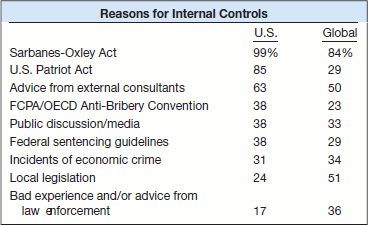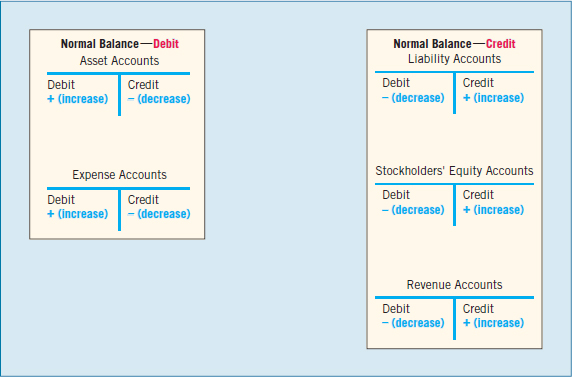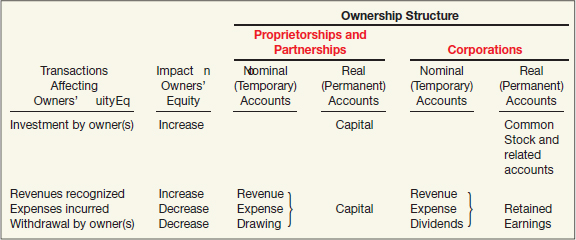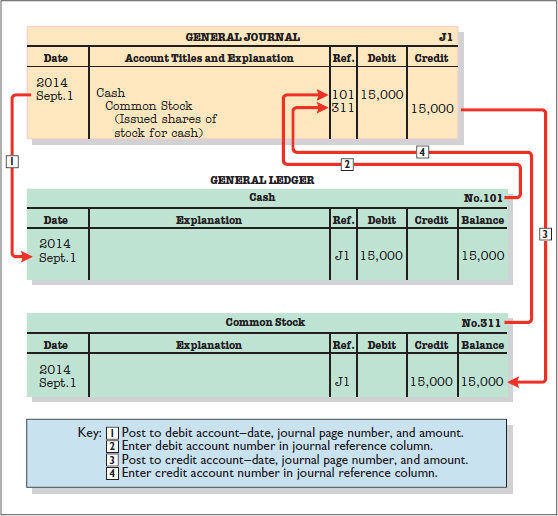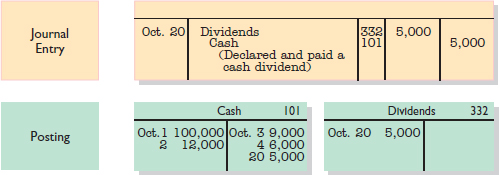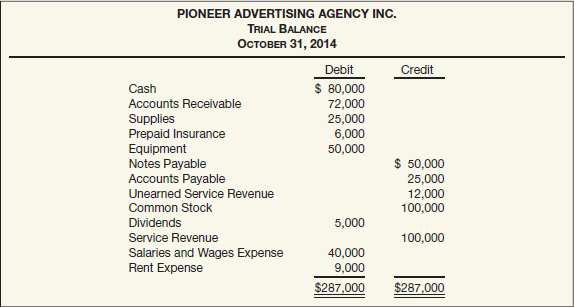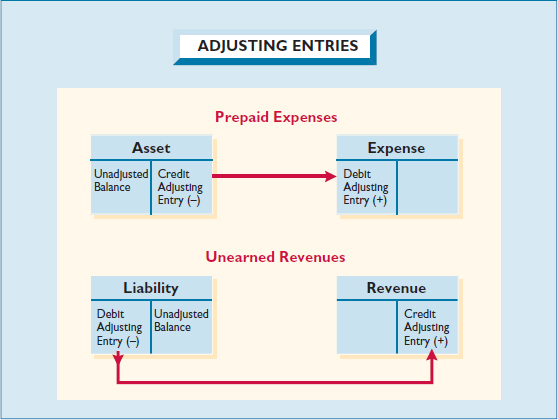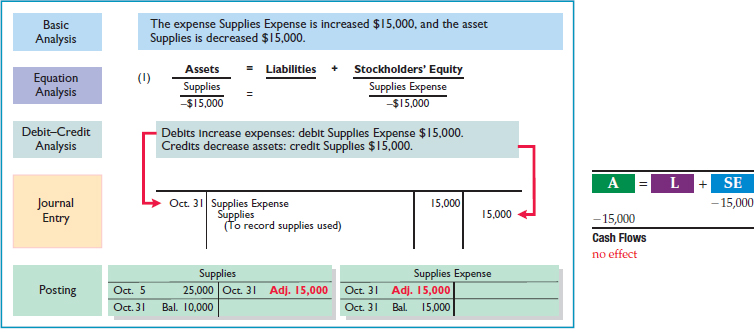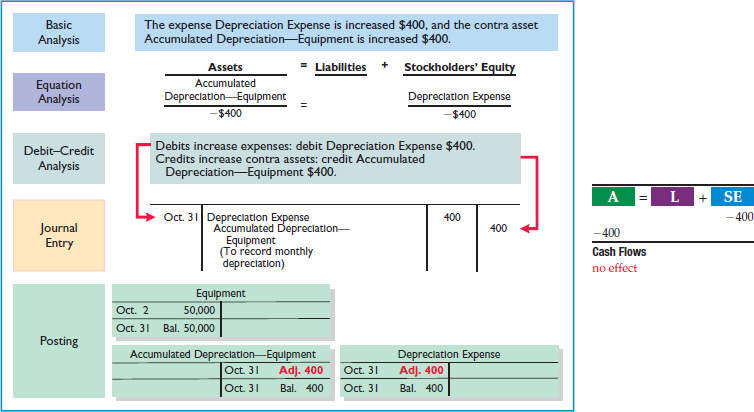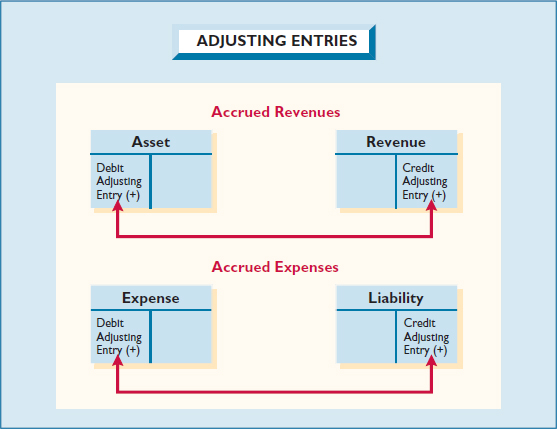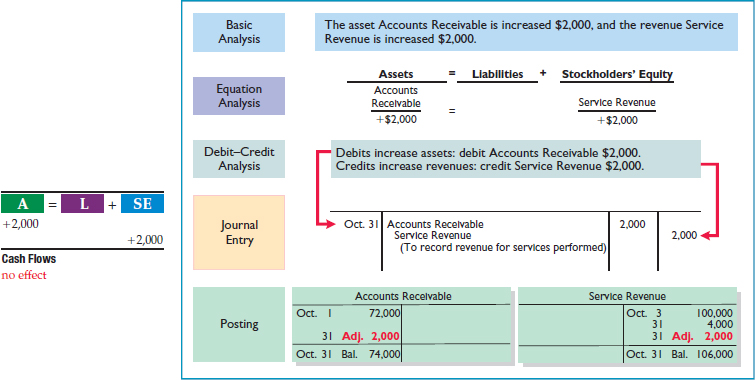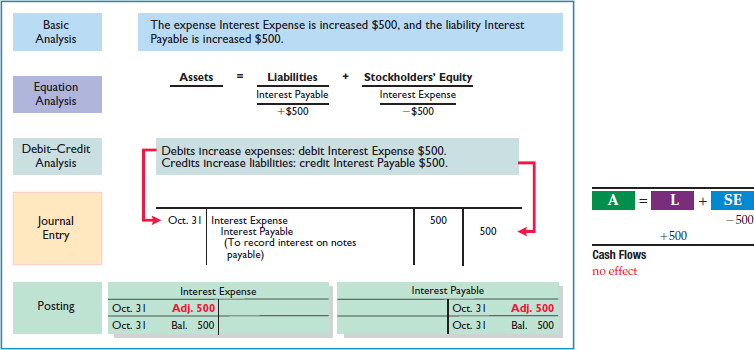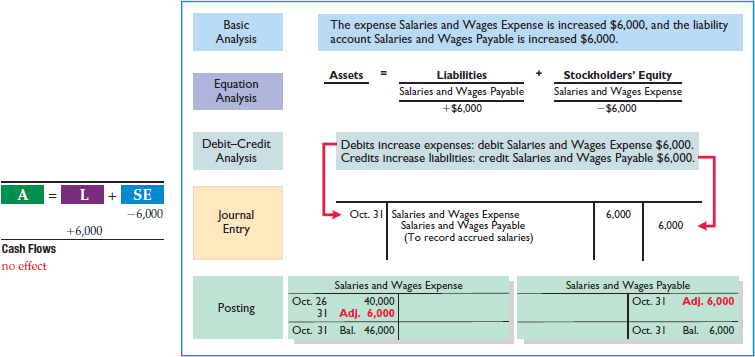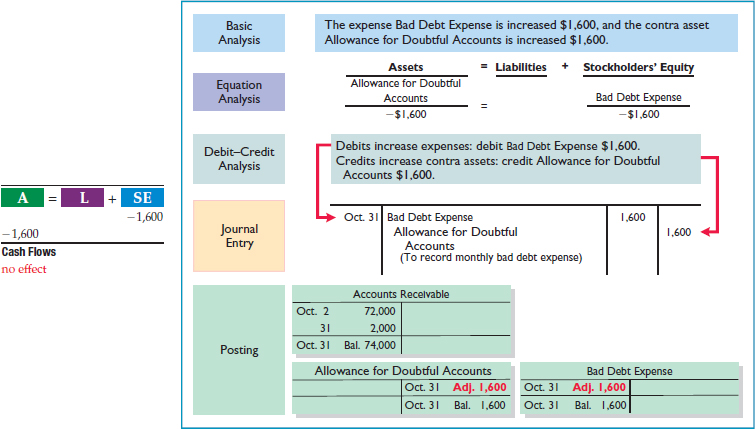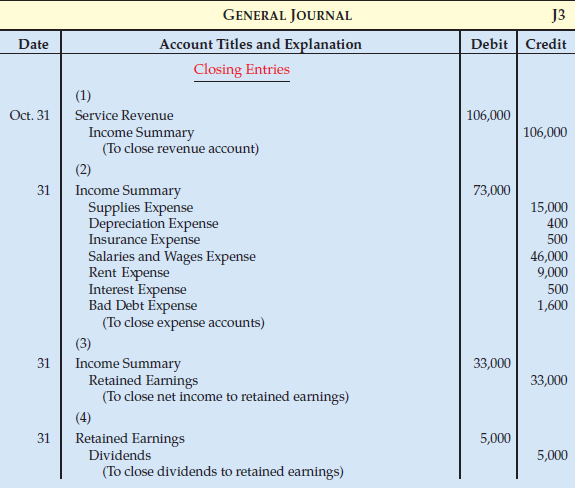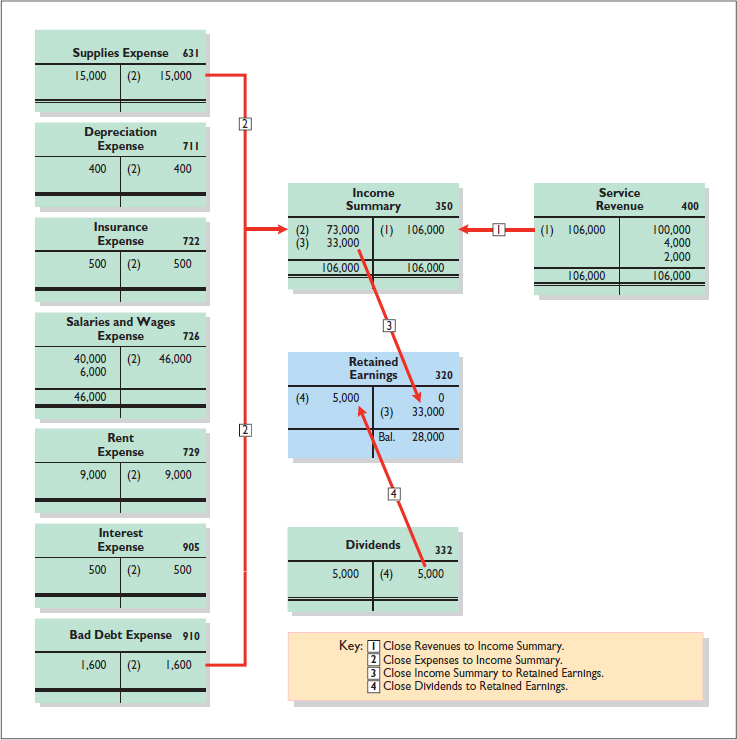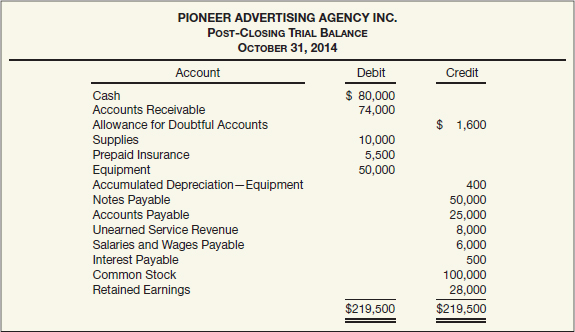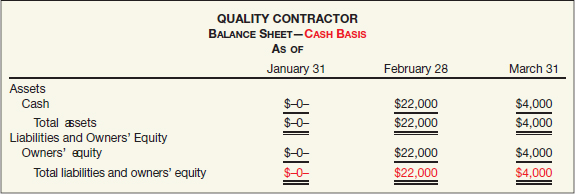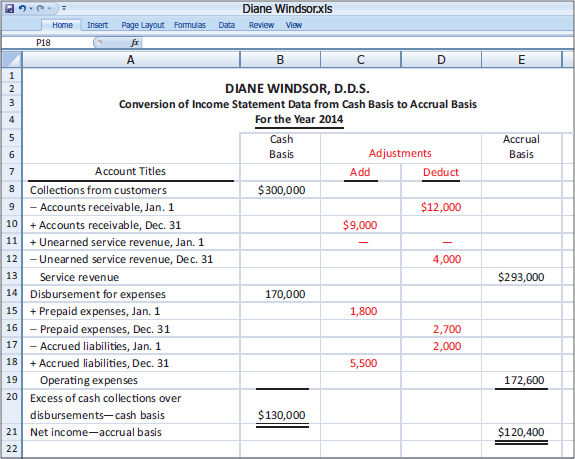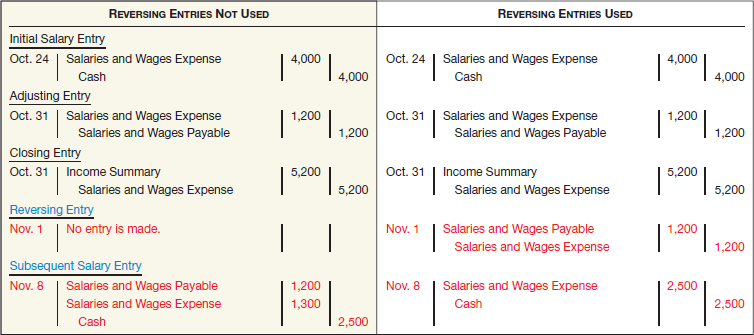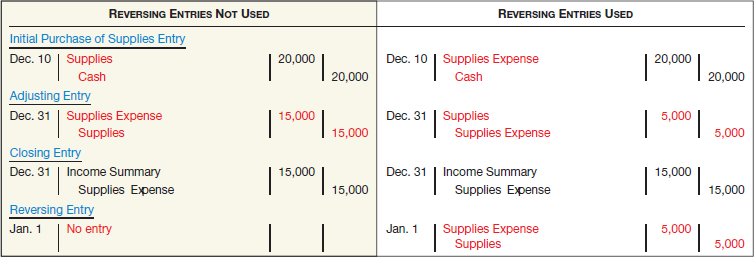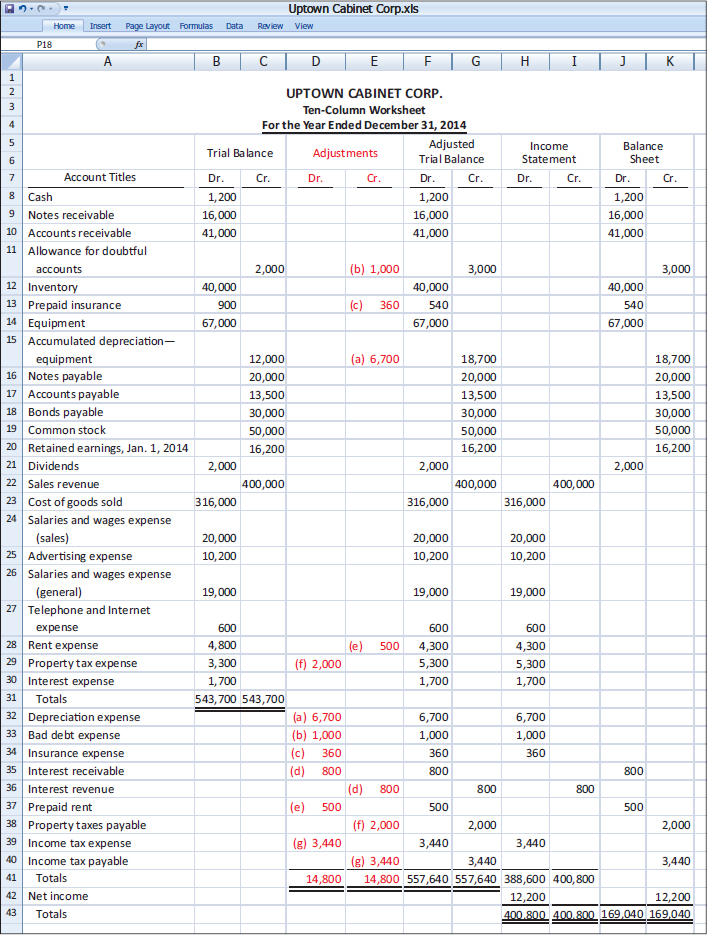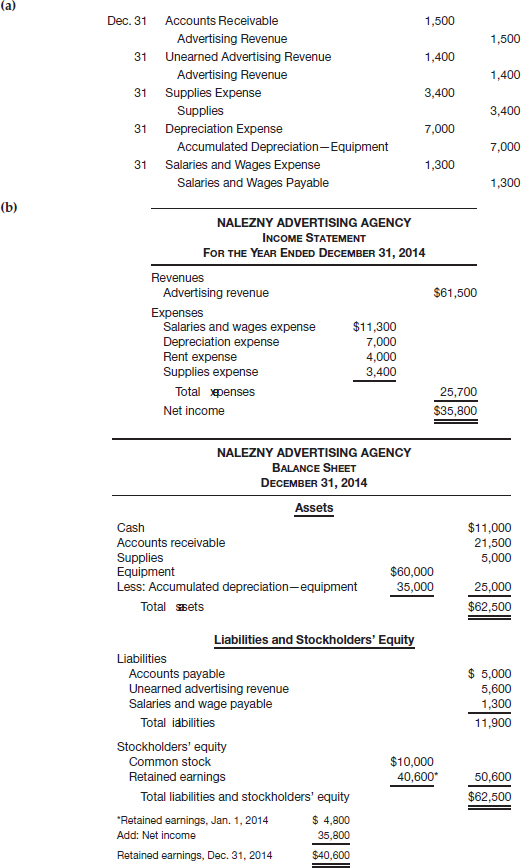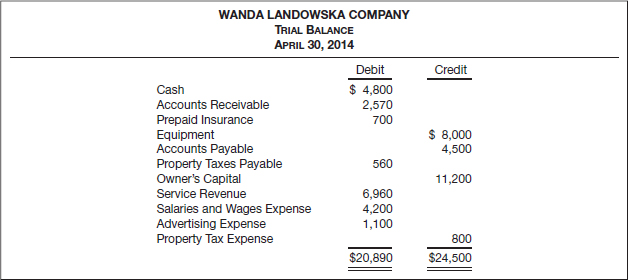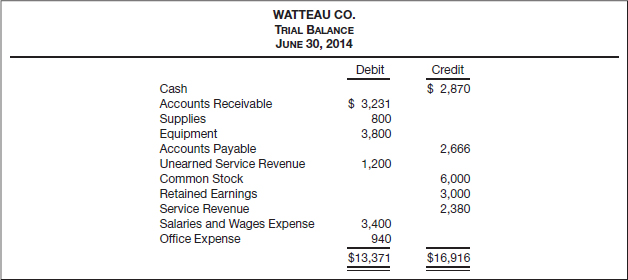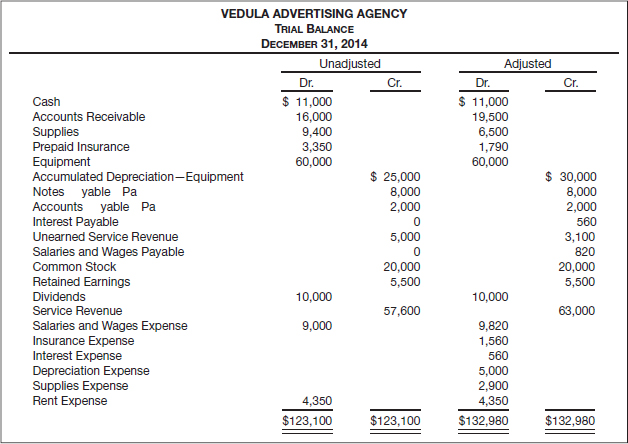CHAPTER 3 The Accounting Information System
LEARNING OBJECTIVES
After studying this chapter, you should be able to:
- Understand basic accounting terminology.
- Explain double-entry rules.
- Identify steps in the accounting cycle.
- Record transactions in journals, post to ledger accounts, and prepare a trial balance.
- Explain the reasons for preparing adjusting entries and identify major types of adjusting entries.
- Prepare financial statements from the adjusted trial balance.
- Prepare closing entries.
- Prepare financial statements for a merchandising company.
Needed: A Reliable Information System
Maintaining a set of accounting records is not optional. Regulators require that businesses prepare and retain a set of records and documents that can be audited. The U.S. Foreign Corrupt Practices Act, for example, requires public companies to “make and keep books, records, and accounts, which, in reasonable detail, accurately and fairly reflect the transactions and dispositions of the assets.” But beyond these two reasons, a company that fails to keep an accurate record of its business transactions may lose revenue and is more likely to operate inefficiently.
One reason accurate records are not provided is because of economic crime or corruption. It is clear that economic crime remains a persistent and difficult problem for many companies. For example, it was recently estimated that 53 percent of U.S. companies experienced significant economic crime. And its global counterparts are not far behind, with a reported rate of 43 percent. While global rates appear lower, U.S. companies often have more stringent internal controls and are more likely to find and report crime. Presented to the right is a chart that indicates the types of economic crime experienced in a recent period.

The top four economic crimes are asset misappropriation, accounting fraud, bribery and corruption, and cybercrime. Cybercrime is a new phenomenon as new types of fraud are emerging in this area. Smartphones and tablet devices, social media, and cloud computing all offer companies interesting business opportunities but can also lead to risks related to the disclosure of sensitive and confidential data.
In some of these cases, such as money laundering or infringement of intellectual property, a sound system of internal controls focused on financial accounting and reporting may not work. Nonetheless, many believe that effective internal control sends a message that a company is serious about finding not only economic crime but also errors or misstatements. As a result, many companies are taking a proactive look as to how they can better prevent both economic crime as well as basic errors in their systems. The chart on the next page indicates the percentage of companies that identified certain factors influencing their decision to implement controls to deter economic crime.
![]() CONCEPTUAL FOCUS
CONCEPTUAL FOCUS
- See the Underlying Concepts on page 90.
![]() INTERNATIONAL FOCUS
INTERNATIONAL FOCUS
- Read the IFRS Insights on pages 153–157 for a discussion of:
- Accounting system internal controls
- First-time adoption of IFRS
What happens when companies fail to keep an accurate record of their business transactions? Consider Adecco, the largest international employment services company, which confirmed existence of weakness in its internal controls systems and Adecco staffing operations in certain countries. Manipulation involved such matters as reconciliation of payroll bank accounts, accounts receivable, and documentation in revenue recognition. These irregularities forced an indefinite delay in reporting the company's income figures, which led to significant decline in share price. Or consider Nortel Networks Corp., which overstated and understated its reserve accounts to manage its earnings. This eventually led to the liquidation of the company.
Even the use of computers is no assurance of accuracy and efficiency. “The conversion to a new system called MasterNet fouled up data processing records to the extent that Bank of America was frequently unable to produce or deliver customer statements on a timely basis,” said an executive at one of the country's largest banks.
Although these situations may occur only rarely in large organizations, they illustrate the point: Companies must properly maintain accounts and detailed records or face unnecessary costs.
Sources: Adapted from “Economic Crime: People, Culture, and Controls,” The Fourth Biennial Global Economic Crime Survey (PricewaterhouseCoopers, 2007); and “Cybercrime: Protecting Against the Growing Threat,” Global Economic Crime Survey (PricewaterhouseCoopers, 2012).
PREVIEW OF CHAPTER 3
As the opening story indicates, a reliable information system is a necessity for all companies. The purpose of this chapter is to explain and illustrate the features of an accounting information system. The content and organization of this chapter are as follows.
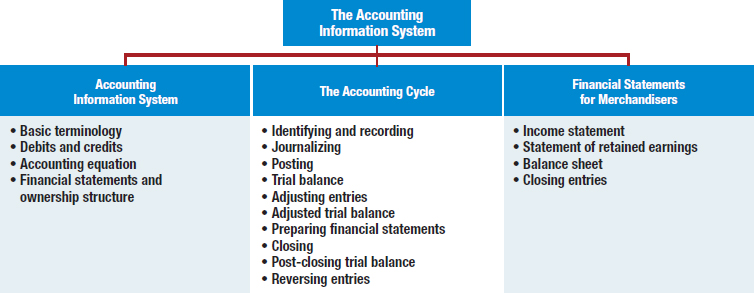
ACCOUNTING INFORMATION SYSTEM
An accounting information system collects and processes transaction data and then disseminates the financial information to interested parties. Accounting information systems vary widely from one business to another. Various factors shape these systems: the nature of the business and the transactions in which it engages, the size of the firm, the volume of data to be handled, and the informational demands that management and others require.
As we discussed in Chapters 1 and 2, in response to the requirements of the Sarbanes-Oxley Act, companies are placing a renewed focus on their accounting systems to ensure relevant and reliable information is reported in financial statements.1 A good accounting information system helps management answer such questions as:
- How much and what kind of debt is outstanding?
- Were our sales higher this period than last?
- What assets do we have?
- What were our cash inflows and outflows?
- Did we make a profit last period?
- Are any of our product lines or divisions operating at a loss?
- Can we safely increase our dividends to stockholders?
- Is our rate of return on net assets increasing?
Management can answer many other questions with the data provided by an efficient accounting system. A well-devised accounting information system benefits every type of company.
Basic Terminology
Financial accounting rests on a set of concepts (discussed in Chapters 1 and 2) for identifying, recording, classifying, and interpreting transactions and other events relating to enterprises. You therefore need to understand the basic terminology employed in collecting accounting data.
BASIC TERMINOLOGY
EVENT. A happening of consequence. An event generally is the source or cause of changes in assets, liabilities, and equity. Events may be external or internal.
TRANSACTION. An external event involving a transfer or exchange between two or more entities.
ACCOUNT. A systematic arrangement that shows the effect of transactions and other events on a specific element (asset, liability, and so on). Companies keep a separate account for each asset, liability, revenue, and expense, and for capital (owners' equity). Because the format of an account often resembles the letter T, it is sometimes referred to as a T-account. (See Illustration 3-3, page 87.)
REAL AND NOMINAL ACCOUNTS. Real (permanent) accounts are asset, liability, and equity accounts; they appear on the balance sheet. Nominal (temporary) accounts are revenue, expense, and dividend accounts; except for dividends, they appear on the income statement. Companies periodically close nominal accounts; they do not close real accounts.
LEDGER. The book (or computer printouts) containing the accounts. A general ledger is a collection of all the asset, liability, owners' equity, revenue, and expense accounts. A subsidiary ledger contains the details related to a given general ledger account.
JOURNAL. The “book of original entry” where the company initially records transactions and selected other events. Various amounts are transferred from the book of original entry, the journal, to the ledger. Entering transaction data in the journal is known as journalizing.
POSTING. The process of transferring the essential facts and figures from the book of original entry to the ledger accounts.
TRIAL BALANCE. The list of all open accounts in the ledger and their balances. The trial balance taken immediately after all adjustments have been posted is called an adjusted trial balance. A trial balance taken immediately after closing entries have been posted is called a post-closing (or after-closing) trial balance. Companies may prepare a trial balance at any time.
ADJUSTING ENTRIES. Entries made at the end of an accounting period to bring all accounts up to date on an accrual basis, so that the company can prepare correct financial statements.
FINANCIAL STATEMENTS. Statements that reflect the collection, tabulation, and final summarization of the accounting data. Four statements are involved. (1) The balance sheet shows the financial condition of the enterprise at the end of a period. (2) The income statement measures the results of operations during the period. (3) The statement of cash flows reports the cash provided and used by operating, investing, and financing activities during the period. (4) The statement of retained earnings reconciles the balance of the retained earnings account from the beginning to the end of the period.
CLOSING ENTRIES. The formal process by which the enterprise reduces all nominal accounts to zero and determines and transfers the net income or net loss to an owners' equity account. Also known as “closing the ledger,” “closing the books,” or merely “closing.”
Debits and Credits
LEARNING OBJECTIVE ![]()
Explain double-entry rules.
The terms debit (Dr.) and credit (Cr.) mean left and right, respectively. These terms do not mean increase or decrease, but instead describe where a company makes entries in the recording process. That is, when a company enters an amount on the left side of an account, it debits the account. When it makes an entry on the right side, it credits the account. When comparing the totals of the two sides, an account shows a debit balance if the total of the debit amounts exceeds the credits. An account shows a credit balance if the credit amounts exceed the debits.
The positioning of debits on the left and credits on the right is simply an accounting custom. We could function just as well if we reversed the sides. However, the United States adopted the custom, now the rule, of having debits on the left side of an account and credits on the right side, similar to the custom of driving on the right-hand side of the road. This rule applies to all accounts.
The equality of debits and credits provides the basis for the double-entry system of recording transactions (sometimes referred to as double-entry bookkeeping). Under the universally used double-entry accounting system, a company records the dual (two-sided) effect of each transaction in appropriate accounts. This system provides a logical method for recording transactions. It also offers a means of proving the accuracy of the recorded amounts. If a company records every transaction with equal debits and credits, then the sum of all the debits to the accounts must equal the sum of all the credits.
Illustration 3-1 presents the basic guidelines for an accounting system. Increases to all asset and expense accounts occur on the left (or debit side) and decreases on the right (or credit side). Conversely, increases to all liability and revenue accounts occur on the right (or credit side) and decreases on the left (or debit side). A company increases stockholders' equity accounts, such as Common Stock and Retained Earnings, on the credit side, but increases Dividends on the debit side.
The Accounting Equation
In a double-entry system, for every debit there must be a credit, and vice versa. This leads us, then, to the basic equation in accounting (Illustration 3-2).
Illustration 3-3 expands this equation to show the accounts that make up stockholders' equity. The figure also shows the debit/credit rules and effects on each type of account. Study this diagram carefully. It will help you understand the fundamentals of the double-entry system. Like the basic equation, the expanded equation must also balance (total debits equal total credits).
Every time a transaction occurs, the elements of the accounting equation change. However, the basic equality remains. To illustrate, consider the following eight different transactions for Perez Inc.
- Owners invest $40,000 in exchange for common stock.

- Disburse $600 cash for secretarial wages.

- Purchase office equipment priced at $5,200, giving a 10 percent promissory note in exchange.

- Receive $4,000 cash for services performed.

- Pay off a short-term liability of $7,000.

- Declare a cash dividend of $5,000.

- Convert a long-term liability of $80,000 into common stock.

- Pay cash of $16,000 for a delivery van.

Financial Statements and Ownership Structure
The stockholders' equity section of the balance sheet reports common stock and retained earnings. The income statement reports revenues and expenses. The statement of retained earnings reports dividends. Because a company transfers dividends, revenues, and expenses to retained earnings at the end of the period, a change in any one of these three items affects stockholders' equity. Illustration 3-4 shows the stockholders' equity relationships.
The company's ownership structure dictates the types of accounts that are part of or affect the equity section. A corporation commonly uses Common Stock, Paid-in Capital in Excess of Par, Dividends, and Retained Earnings accounts. A proprietorship or a partnership uses an Owner's Capital account and an Owner's Drawings account. An Owner's Capital account indicates the owner's or owners' investment in the company. An Owner's Drawings account tracks withdrawals by the owner(s).
Illustration 3-5 summarizes and relates the transactions affecting owners' equity to the nominal (temporary) and real (permanent) classifications and to the types of business ownership.
THE ACCOUNTING CYCLE
LEARNING OBJECTIVE ![]()
Identify steps in the accounting cycle.
Illustration 3-6 (on page 90) shows the steps in the accounting cycle. A company normally uses these accounting procedures to record transactions and prepare financial statements.
Identifying and Recording Transactions and Other Events
The first step in the accounting cycle is analysis of transactions and selected other events. The first problem is to determine what to record. Although GAAP provides guidelines, no simple rules exist that state which events a company should record. Although changes in a company's personnel or managerial policies may be important, the company should not record these items in the accounts. On the other hand, a company should record all cash sales or purchases—no matter how small.
The concepts we presented in Chapter 2 determine what to recognize in the accounts. An item should be recognized in the financial statements if it is an element, is measurable, and is relevant and representationally faithful. Consider human resources. R. G. Barry & Co. at one time reported as supplemental data total assets of $14,055,926, including $986,094 for “Net investments in human resources.” AT&T and ExxonMobil also experimented with human resource accounting. Should we value employees for balance sheet and income statement purposes? Certainly skilled employees are an important asset (highly relevant), but the problems of determining their value and measuring it reliably have not yet been solved. Consequently, human resources are not recorded. Perhaps when measurement techniques become more sophisticated and accepted, such information will be presented, if only in supplemental form.
![]() Underlying Concepts
Underlying Concepts
Assets are probable economic benefits controlled by a particular entity as a result of a past transaction or event. Do human resources of a company meet this definition?
The FASB uses the phrase “transactions and other events and circumstances that affect a business enterprise” to describe the sources or causes of changes in an entity's assets, liabilities, and equity.2 Events are of two types. (1) External events involve interaction between an entity and its environment, such as a transaction with another entity, a change in the price of a good or service that an entity buys or sells, a flood or earthquake, or an improvement in technology by a competitor. (2) Internal events occur within an entity, such as using buildings and machinery in operations, or transferring or consuming raw materials in production processes.
Many events have both external and internal elements. For example, hiring an employee, which involves an exchange of salary for labor, is an external event. Using the services of labor is part of production, an internal event. Further, an entity may initiate and control events, such as the purchase of merchandise or use of a machine. Or, events may be beyond its control, such as an interest rate change, theft, or a tax hike.
Transactions are types of external events. They may be an exchange between two entities where each receives and sacrifices value, such as purchases and sales of goods or services. Or, transactions may be transfers in one direction only. For example, an entity may incur a liability without directly receiving value in exchange, such as charitable contributions. Other examples include investments by owners, distributions to owners, payment of taxes, gifts, casualty losses, and thefts.
In short, a company records as many events as possible that affect its financial position. As discussed earlier in the case of human resources, it omits some events because of tradition and others because of complicated measurement problems. Recently, however, the accounting profession shows more receptiveness to accepting the challenge of measuring and reporting events previously viewed as too complex and immeasurable.
Journalizing
LEARNING OBJECTIVE ![]()
Record transactions in journals, post to ledger accounts, and prepare a trial balance.
A company records in accounts those transactions and events that affect its assets, liabilities, and equities. The general ledger contains all the asset, liability, and stockholders' equity accounts. An account (see Illustration 3-3, on page 87) shows the effect of transactions on particular asset, liability, equity, revenue, and expense accounts.
In practice, companies do not record transactions and selected other events originally in the ledger. A transaction affects two or more accounts, each of which is on a different page in the ledger. Therefore, in order to have a complete record of each transaction or other event in one place, a company uses a journal (also called “the book of original entry”). In its simplest form, a general journal chronologically lists transactions and other events, expressed in terms of debits and credits to accounts.
Illustration 3-7 shows the technique of journalizing, using the first two transactions for Softbyte, Inc. These transactions were:
| September 1 | Stockholders invested $15,000 cash in the corporation in exchange for shares of stock. Purchased computer equipment for $7,000 cash. |
The J1 indicates these two entries are on the first page of the general journal.
Each general journal entry consists of four parts: (1) the accounts and amounts to be debited (Dr.), (2) the accounts and amounts to be credited (Cr.), (3) a date, and (4) an explanation. A company enters debits first, followed by the credits (slightly indented). The explanation begins below the name of the last account to be credited and may take one or more lines. A company completes the “Ref.” column at the time it posts the accounts.

In some cases, a company uses special journals in addition to the general journal. Special journals summarize transactions possessing a common characteristic (e.g., cash receipts, sales, purchases, cash payments). As a result, using them reduces bookkeeping time.
Posting
Transferring journal entries to the ledger accounts is called posting. Posting involves the following steps.
- In the ledger, in the appropriate columns of the account(s) debited, enter the date, journal page, and debit amount shown in the journal.
- In the reference column of the journal, write the account number to which the debit amount was posted.
- In the ledger, in the appropriate columns of the account(s) credited, enter the date, journal page, and credit amount shown in the journal.
- In the reference column of the journal, write the account number to which the credit amount was posted.
Illustration 3-8 diagrams these four steps, using the first journal entry of Softbyte, Inc. The illustration shows the general ledger accounts in standard account form. Some companies call this form the three-column form of account because it has three money columns—debit, credit, and balance. The balance in the account is determined after each transaction. The explanation space and reference columns provide special information about the transaction. The boxed numbers indicate the sequence of the steps.
The numbers in the “Ref.” column of the general journal refer to the ledger accounts to which a company posts the respective items. For example, the “101” placed in the column to the right of “Cash” indicates that the company posted this $15,000 item to Account No. 101 in the ledger.
The posting of the general journal is completed when a company records all of the posting reference numbers opposite the account titles in the journal. Thus, the number in the posting reference column serves two purposes. (1) It indicates the ledger account number of the account involved. (2) It indicates the completion of posting for the particular item. Each company selects its own numbering system for its ledger accounts. Many begin numbering with asset accounts and then follow with liabilities, owners' equity, revenue, and expense accounts, in that order.
The ledger accounts in Illustration 3-8 show the accounts after completion of the posting process. The reference J1 (General Journal, page 1) indicates the source of the data transferred to the ledger account.
An Expanded Example
To show an expanded example of the basic steps in the recording process, we use the October transactions of Pioneer Advertising Agency Inc. Pioneer's accounting period is a month. Illustrations 3-9 through 3-18 show the journal entry and posting of each transaction. For simplicity, we use a T-account form instead of the standard account form. Study the transaction analyses carefully.
The purpose of transaction analysis is (1) to identify the type of account involved, and (2) to determine whether a debit or a credit is required. You should always perform this type of analysis before preparing a journal entry. Doing so will help you understand the journal entries discussed in this chapter as well as more complex journal entries in later chapters. Keep in mind that every journal entry affects one or more of the following items: assets, liabilities, stockholders' equity, revenues, or expenses.
- October 1: Stockholders invest $100,000 cash in an advertising venture to be known as Pioneer Advertising Agency Inc.
- October 1: Pioneer Advertising purchases office equipment costing $50,000 by signing a 3-month, 12%, $50,000 note payable.
- October 2: Pioneer Advertising receives a $12,000 cash advance from R. Knox, a client, for advertising services that are expected to be completed by December 31.
- October 3: Pioneer Advertising pays $9,000 office rent, in cash, for October.
- October 4: Pioneer Advertising pays $6,000 for a one-year insurance policy that will expire next year on September 30.
- October 5: Pioneer Advertising purchases, for $25,000 on account, an estimated 3-month supply of advertising materials from Aero Supply.
- October 9: Pioneer Advertising signs a contract with a local newspaper for advertising inserts (flyers) to be distributed starting the last Sunday in November. Pioneer will start work on the content of the flyers in November. Payment of $7,000 is due following delivery of the Sunday papers containing the flyers.
- October 20: Pioneer Advertising's board of directors declares and pays a $5,000 cash dividend to stockholders.
- October 26: Pioneer Advertising pays employee salaries and wages in cash. Employees are paid once a month, every four weeks. The total payroll is $10,000 per week, or $2,000 per day. In October, the pay period began on Monday, October 1. As a result, the pay period ended on Friday, October 26, with salaries and wages of $40,000 being paid.
- October 31: Pioneer Advertising receives $28,000 in cash and bills Copa Company $72,000 for advertising services of $100,000 performed in October.
Trial Balance
A trial balance is a list of accounts and their balances at a given time. A company usually prepares a trial balance at the end of an accounting period. The trial balance lists the accounts in the order in which they appear in the ledger, with debit balances listed in the left column and credit balances in the right column. The totals of the two columns must agree.
The trial balance proves the mathematical equality of debits and credits after posting. Under the double-entry system, this equality occurs when the sum of the debit account balances equals the sum of the credit account balances. A trial balance also uncovers errors in journalizing and posting. In addition, it is useful in the preparation of financial statements. The procedures for preparing a trial balance consist of:
- List the account titles and their balances in the appropriate debit or credit column.
- Total the debit and credit columns.
- Prove the equality of the two columns.
Illustration 3-19 presents the trial balance prepared from the ledger of Pioneer Advertising Agency Inc. Note that the total debits ($287,000) equal the total credits ($287,000). A trial balance also often shows account numbers to the left of the account titles.
A trial balance does not prove that a company recorded all transactions or that the ledger is correct. Numerous errors may exist even though the trial balance columns agree. For example, the trial balance may balance even when a company (1) fails to journalize a transaction, (2) omits posting a correct journal entry, (3) posts a journal entry twice, (4) uses incorrect accounts in journalizing or posting, or (5) makes offsetting errors in recording the amount of a transaction. In other words, as long as a company posts equal debits and credits, even to the wrong account or in the wrong amount, the total debits will equal the total credits.
Adjusting Entries
LEARNING OBJECTIVE ![]()
Explain the reasons for preparing adjusting entries and identify major types of adjusting entries.
In order for revenues to be recorded in the period in which services are performed and for expenses to be recognized in the period in which they are incurred, companies make adjusting entries. In short, adjustments ensure that a company like McDonald's follows the revenue recognition and expense recognition principles.
The use of adjusting entries makes it possible to report on the balance sheet the appropriate assets, liabilities, and owners' equity at the statement date. Adjusting entries also make it possible to report on the income statement the proper revenues and expenses for the period. However, the trial balance—the first pulling together of the transaction data—may not contain up-to-date and complete data. This occurs for the following reasons.
- Some events are not recorded daily because it is not efficient to do so. Examples are the use of supplies and the earning of wages by employees.
- Some costs are not recorded during the accounting period because these costs expire with the passage of time rather than as a result of recurring daily transactions. Examples of such costs are building and equipment depreciation and rent and insurance.
- Some items may be unrecorded. An example is a utility service bill that will not be received until the next accounting period.
Adjusting entries are required every time a company, such as Coca-Cola, prepares financial statements. At that time, Coca-Cola must analyze each account in the trial balance to determine whether it is complete and up-to-date for financial statement purposes. The analysis requires a thorough understanding of Coca-Cola's operations and the interrelationship of accounts. Because of this involved process, usually a skilled accountant prepares the adjusting entries. In gathering the adjustment data, Coca-Cola may need to make inventory counts of supplies and repair parts. Further, it may prepare supporting schedules of insurance policies, rental agreements, and other contractual commitments. Companies often prepare adjustments after the balance sheet date. However, they date the entries as of the balance sheet date.
Types of Adjusting Entries
Adjusting entries are classified as either deferrals or accruals. Each of these classes has two subcategories, as Illustration 3-20 shows.
We review specific examples and explanations of each type of adjustment in subsequent sections. We base each example on the October 31 trial balance of Pioneer Advertising Agency Inc. (Illustration 3-19). We assume that Pioneer uses an accounting period of one month. Thus, Pioneer will make monthly adjusting entries, dated October 31.
Adjusting Entries for Deferrals
To defer means to postpone or delay. Deferrals are expenses or revenues that are recognized at a date later than the point when cash was originally exchanged. The two types of deferrals are prepaid expenses and unearned revenues.
If a company does not make an adjustment for these deferrals, the asset and liability are overstated, and the related expense and revenue are understated. For example, in Pioneer's trial balance (Illustration 3-19), the balance in the asset Supplies shows only supplies purchased. This balance is overstated; the related expense account, Supplies Expense, is understated because the cost of supplies used has not been recognized. Thus, the adjusting entry for deferrals will decrease a balance sheet account and increase an income statement account. Illustration 3-21 shows the effects of adjusting entries for deferrals.
Prepaid Expenses. Assets paid for and recorded before a company uses them are called prepaid expenses. When expenses are prepaid, a company debits an asset account to show the service or benefit it will receive in the future. Examples of common prepayments are insurance, supplies, advertising, and rent. In addition, companies make prepayments when they purchase buildings and equipment.
Prepaid expenses are costs that expire either with the passage of time (e.g., rent and insurance) or through use and consumption (e.g., supplies). The expiration of these costs does not require daily entries, an unnecessary and impractical task. Accordingly, a company like Walgreens usually postpones the recognition of such cost expirations until it prepares financial statements. At each statement date, Walgreens makes adjusting entries to record the expenses that apply to the current accounting period and to show the remaining amounts in the asset accounts.
As shown above, prior to adjustment, assets are overstated and expenses are understated. Thus, an adjusting entry for prepaid expenses results in a debit to an expense account and a credit to an asset account.
Supplies. A business may use several different types of supplies. For example, a CPA firm will use office supplies such as stationery, envelopes, and accounting paper. An advertising firm will stock advertising supplies such as graph paper, video film, and poster paper. Supplies are generally debited to an asset account when they are acquired. Recognition of supplies used is generally deferred until the adjustment process. At that time, a physical inventory (count) of supplies is taken. The difference between the balance in the Supplies (asset) account and the cost of supplies on hand represents the supplies used (an expense) for the period.

For example, Pioneer Advertising purchased advertising supplies costing $25,000 on October 5. Pioneer therefore debited the asset Supplies. This account shows a balance of $25,000 in the October 31 trial balance (see Illustration 3-19 on page 96). An inventory count at the close of business on October 31 reveals that $10,000 of supplies are still on hand. Thus, the cost of supplies used is $15,000 ($25,000 − $10,000). The analysis and adjustment for advertising supplies is summarized in Illustration 3-22.
After adjustment, the asset account Supplies shows a balance of $10,000, which equals the cost of supplies on hand at the statement date. In addition, Supplies Expense shows a balance of $15,000, which equals the cost of supplies used in October. Without an adjusting entry, October expenses are understated and net income overstated by $15,000. Moreover, both assets and stockholders' equity are overstated by $15,000 on the October 31 balance sheet.
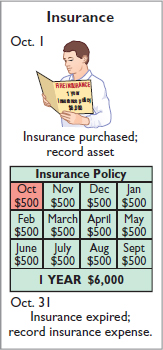
Insurance. Most companies maintain fire and theft insurance on merchandise and equipment, personal liability insurance for accidents suffered by customers, and automobile insurance on company cars and trucks. The extent of protection against loss determines the cost of the insurance (the amount of the premium to be paid). The insurance policy specifies the term and coverage. The minimum term usually covers one year, but three-to five-year terms are available and may offer lower annual premiums. A company usually debits insurance premiums to the asset account Prepaid Insurance when paid. At the financial statement date, it then debits Insurance Expense and credits Prepaid Insurance for the cost that expired during the period.
For example, on October 4, Pioneer Advertising paid $6,000 for a one-year fire insurance policy. Coverage began on October 1. Pioneer debited the cost of the premium to Prepaid Insurance at that time. This account still shows a balance of $6,000 in the October 31 trial balance. The analysis and adjustment for insurance is summarized in Illustration 3-23 (page 100).
The asset Prepaid Insurance shows a balance of $5,500, which represents the unexpired cost for the remaining 11 months of coverage. At the same time, the balance in Insurance Expense equals the insurance cost that expired in October. Without an adjusting entry, October expenses are understated by $500 and net income overstated by $500. Moreover, both assets and stockholders' equity also are overstated by $500 on the October 31 balance sheet.
Depreciation. Companies like Caterpillar or Boeing typically own various productive facilities, such as buildings, equipment, and motor vehicles. These assets provide a service for a number of years. The term of service is commonly referred to as the useful life of the asset. Because Caterpillar, for example, expects an asset such as a building to provide service for many years, Caterpillar records the building as an asset, rather than an expense, in the year the building is acquired. Caterpillar records such assets at cost, as required by the historical cost principle.
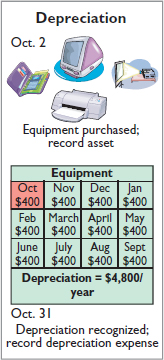
To follow the expense recognition principle, Caterpillar reports a portion of the cost of a long-lived asset as an expense during each period of the asset's useful life. Depreciation is the process of allocating the cost of an asset to expense over its useful life in a rational and systematic manner.
Need for depreciation adjustment. Generally accepted accounting principles (GAAP) view the acquisition of productive facilities as a long-term prepayment for services. The need for making periodic adjusting entries for depreciation is, therefore, the same as we described for other prepaid expenses. That is, a company recognizes the expired cost (expense) during the period and reports the unexpired cost (asset) at the end of the period. The primary causes of depreciation of a productive facility are actual use, deterioration due to the elements, and obsolescence. For example, at the time Caterpillar acquires an asset, the effects of these factors cannot be known with certainty. Therefore, Caterpillar must estimate them. Thus, depreciation is an estimate rather than a factual measurement of the expired cost.
To estimate depreciation expense, Caterpillar often divides the cost of the asset by its useful life. For example, if Caterpillar purchases equipment for $10,000 and expects its useful life to be 10 years, Caterpillar records annual depreciation of $1,000.
In the case of Pioneer Advertising, it estimates depreciation on its office equipment to be $4,800 a year (cost $50,000 less salvage value $2,000 divided by useful life of 10 years), or $400 per month. The analysis and adjustment for depreciation is summarized in Illustration 3-24.
The balance in the Accumulated Depreciation—Equipment account will increase $400 each month. Therefore, after recording and posting the adjusting entry at November 30, the balance will be $800.
Statement presentation. Accumulated Depreciation—Equipment is a contra asset account. A contra asset account offsets an asset account on the balance sheet. This means that the Accumulated Depreciation—Equipment account offsets the Equipment account on the balance sheet. Its normal balance is a credit. Pioneer uses this account instead of crediting Equipment in order to disclose both the original cost of the equipment and the total expired cost to date. In the balance sheet, Pioneer deducts Accumulated Depreciation—Equipment from the related asset account as follows.
The book value of any depreciable asset is the difference between its cost and its related accumulated depreciation. In Illustration 3-25, the book value of the equipment at the balance sheet date is $49,600. Note that the asset's book value generally differs from its fair value. The reason: Depreciation is an allocation concept, not a valuation concept. That is, depreciation allocates an asset's cost to the periods in which it is used. Depreciation does not attempt to report the actual change in the value of the asset.
Depreciation expense identifies that portion of the asset's cost that expired during the period (in this case, October). Without this adjusting entry, total assets, total stockholders' equity, and net income are overstated, and depreciation expense is understated.
A company records depreciation expense for each piece of equipment, such as trucks or machinery, and for all buildings. A company also establishes related accumulated depreciation accounts for the above, such as Accumulated Depreciation—Trucks, Accumulated Depreciation—Machinery, and Accumulated Depreciation—Buildings.
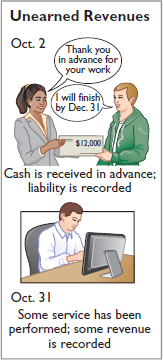
Unearned Revenues. When companies receive cash before services are performed, they record a liability by increasing (crediting) a liability account called unearned revenues. In other words, a company now has a performance obligation (liability) to provide service to one its customers. Items like rent, magazine subscriptions, and customer deposits for future service may result in unearned revenues. Airlines, such as Delta, American, and Southwest, treat receipts from the sale of tickets as unearned revenue until they provide the flight service. Tuition received prior to the start of a semester is another example of unearned revenue.
Unearned revenues are the opposite of prepaid expenses. Indeed, unearned revenue on the books of one company is likely to be a prepayment on the books of the company that made the advance payment. For example, if we assume identical accounting periods, a landlord will have unearned rent revenue when a tenant has prepaid rent.
When a company such as Intel receives payment for services to be performed in a future accounting period, it credits an unearned revenue (a liability) account to recognize the liability that exists. Intel subsequently recognizes revenue when it performs the service. However, making daily entries to record this revenue is impractical. Instead, Intel delays recognition of revenue until the adjustment process. Then, Intel makes an adjusting entry to record the revenue for services performed during the period and to show the liability that remains at the end of the accounting period. In the typical case, liabilities are overstated and revenues are understated prior to adjustment. Thus, the adjusting entry for unearned revenues results in a debit (decrease) to a liability account and a credit (increase) to a revenue account.
For example, Pioneer Advertising received $12,000 on October 2 from R. Knox for advertising services expected to be completed by December 31. Pioneer credited the payment to Unearned Service Revenue. This liability account shows a balance of $12,000 in the October 31 trial balance. Based on an evaluation of the service Pioneer performed for Knox during October, the company determines that it should recognize $4,000 of revenue in October. The liability (Unearned Service Revenue) is therefore decreased and stockholders' equity (Service Revenue) is increased, as shown in Illustration 3-26.
The liability Unearned Service Revenue now shows a balance of $8,000. This amount represents the remaining advertising services expected to be performed in the future. At the same time, Service Revenue shows total revenue recognized in October of $104,000. Without this adjustment, revenues and net income are understated by $4,000 in the income statement. Moreover, liabilities will be overstated and stockholders' equity will be understated by $4,000 on the October 31 balance sheet.
Adjusting Entries for Accruals
The second category of adjusting entries is accruals. Companies make adjusting entries for accruals to record revenues for services performed and expenses incurred in the current accounting period. Without an accrual adjustment, the revenue account (and the related asset account) or the expense account (and the related liability account) are understated. Thus, the adjusting entry for accruals will increase both a balance sheet and an income statement account. Illustration 3-27 shows adjusting entries for accruals.
Accrued Revenues. Revenues for services performed but not yet recorded at the statement date are accrued revenues. Accrued revenues may accumulate (accrue) with the passing of time, as in the case of interest revenue. These are unrecorded because the earning of interest does not involve daily transactions. Companies do not record interest revenue on a daily basis because it is often impractical to do so. Accrued revenues also may result from services that have been performed but not yet billed nor collected, as in the case of commissions and fees. These may be unrecorded because only a portion of the total service has been performed and the clients will not be billed until the service has been completed.
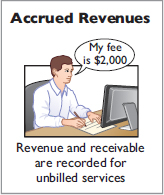
An adjusting entry records the receivable that exists at the balance sheet date and the revenue for the services performed during the period. Prior to adjustment, both assets and revenues are understated. Accordingly, an adjusting entry for accrued revenues results in a debit (increase) to an asset account and a credit (increase) to a revenue account.
In October, Pioneer Advertising performed services worth $2,000 that were not billed to clients on or before October 31. Because these services are not billed, they are not recorded. The accrual of unrecorded service revenue increases an asset account, Accounts Receivable. It also increases stockholders' equity by increasing a revenue account, Service Revenue, as shown in Illustration 3-28.
The asset Accounts Receivable shows that clients owe $74,000 at the balance sheet date. The balance of $106,000 in Service Revenue represents the total revenue for services performed by Pioneer during the month ($100,000 + $4,000 + $2,000). Without an adjusting entry, assets and stockholders' equity on the balance sheet, and revenues and net income on the income statement, are understated.
Accrued Expenses. Expenses incurred but not yet paid or recorded at the statement date are called accrued expenses. Interest, rent, taxes, and salaries are common examples. Accrued expenses result from the same causes as accrued revenues. In fact, an accrued expense on the books of one company is an accrued revenue to another company. For example, the $2,000 accrual of service revenue by Pioneer is an accrued expense to the client that received the service.
Adjustments for accrued expenses record the obligations that exist at the balance sheet date and recognize the expenses that apply to the current accounting period. Prior to adjustment, both liabilities and expenses are understated. Therefore, the adjusting entry for accrued expenses results in a debit (increase) to an expense account and a credit (increase) to a liability account.
Accrued interest. Pioneer Advertising signed a three-month note payable in the amount of $50,000 on October 1. The note requires interest at an annual rate of 12 percent. Three factors determine the amount of the interest accumulation: (1) the face value of the note; (2) the interest rate, which is always expressed as an annual rate; and (3) the length of time the note is outstanding. For Pioneer, the total interest due on the $50,000 note at its maturity date three months' in the future is $1,500 ($50,000 × 12% × 3/12), or $500 for one month. Illustration 3-29 shows the formula for computing interest and its application to Pioneer. Note that the formula expresses the time period as a fraction of a year.
As Illustration 3-30 shows, the accrual of interest at October 31 increases a liability account, Interest Payable. It also decreases stockholders' equity by increasing an expense account, Interest Expense.
Interest Expense shows the interest charges for the month of October. Interest Payable shows the amount of interest owed at the statement date. Pioneer will not pay this amount until the note comes due at the end of three months. Why does Pioneer use the Interest Payable account instead of crediting Notes Payable? By recording interest payable separately, Pioneer discloses the two different types of obligations—interest and principal—in the accounts and statements. Without this adjusting entry, liabilities and interest expense are understated, and both net income and stockholders' equity are overstated.
Accrued salaries and wages. Companies pay for some types of expenses, such as employee salaries and wages, after the services have been performed. For example, Pioneer Advertising last paid salaries and wages on October 26. It will not pay salaries and wages again until November 23. However, as shown in the calendar below, three working days remain in October (October 29–31).
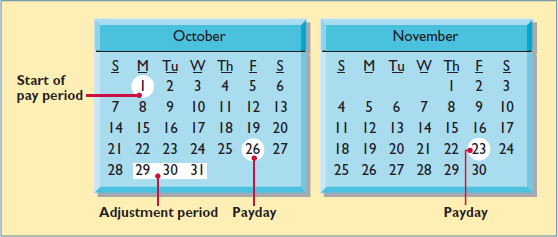
At October 31, the salaries and wages for these days represent an accrued expense and a related liability to Pioneer. The employees receive total salaries and wages of $10,000 for a five-day work week, or $2,000 per day. Thus, accrued salaries and wages at October 31 are $6,000 ($2,000 × 3). The analysis and adjustment process is summarized in Illustration 3-31.
After this adjustment, the balance in Salaries and Wages Expense of $46,000 (23 days × $2,000) is the actual salaries and wages expense for October. The balance in Salaries and Wages Payable of $6,000 is the amount of the liability for salaries and wages owed as of October 31. Without the $6,000 adjustment for salaries, both Pioneer's expenses and liabilities are understated by $6,000.
Pioneer pays salaries and wages every four weeks. Consequently, the next payday is November 23, when it will again pay total salaries and wages of $40,000. The payment consists of $6,000 of salaries and wages payable at October 31 plus $34,000 of salaries and wages expense for November (17 working days as shown in the November calendar × $2,000). Therefore, Pioneer makes the following entry on November 23.

This entry eliminates the liability for Salaries and Wages Payable that Pioneer recorded in the October 31 adjusting entry. This entry also records the proper amount of Salaries and Wages Expense for the period between November 1 and November 23.
What do the numbers mean? AM I COVERED?
Rather than purchasing insurance to cover casualty losses and other obligations, some companies “self-insure.” That is, a company decides to pay for any possible claims, as they arise, out of its own resources. The company also purchases an insurance policy to cover losses that exceed certain amounts.
For example, Almost Family, Inc., a healthcare services company, has a self-insured employee health-benefit program. However, Almost Family ran into accounting problems when it failed to record an accrual of the liability for benefits not covered by its back-up insurance policy. This led to restatement of Almost Family's fiscal results for the accrual of the benefit expense.

Bad debts. Proper recognition of revenues and expenses dictates recording bad debts as an expense of the period in which a company recognizes revenue for services performed instead of the period in which the company writes off the accounts or notes. The proper valuation of the receivable balance also requires recognition of uncollectible receivables. Proper recognition and valuation require an adjusting entry.
At the end of each period, a company such as General Mills estimates the amount of receivables that will later prove to be uncollectible. General Mills bases the estimate on various factors: the amount of bad debts it experienced in past years, general economic conditions, how long the receivables are past due, and other factors that indicate the extent of uncollectibility. To illustrate, assume that, based on past experience, Pioneer Advertising reasonably estimates a bad debt expense for the month of $1,600. The analysis and adjustment process for bad debts is summarized in Illustration 3-32 (page 108).
A company often expresses bad debts as a percentage of the revenue on account for the period. Or, a company may compute bad debts by adjusting Allowance for Doubtful Accounts to a certain percentage of the trade accounts receivable and trade notes receivable at the end of the period.
Adjusted Trial Balance
After journalizing and posting all adjusting entries, Pioneer Advertising prepares another trial balance from its ledger accounts (shown in Illustration 3-33 on page 109). This trial balance is called an adjusted trial balance. The purpose of an adjusted trial balance is to prove the equality of the total debit balances and the total credit balances in the ledger after all adjustments. Because the accounts contain all data needed for financial statements, the adjusted trial balance is the primary basis for the preparation of financial statements.
Preparing Financial Statements
LEARNING OBJECTIVE ![]()
Prepare financial statements from the adjusted trial balance.
As indicated above, Pioneer Advertising can prepare financial statements directly from the adjusted trial balance. Illustrations 3-34 (page 109) and 3-35 (page 110) show the interrelationships of data in the adjusted trial balance and the financial statements.
As Illustration 3-34 shows, Pioneer prepares the income statement from the revenue and expense accounts. Next, it derives the retained earnings statement from the retained earnings and dividends accounts and the net income (or net loss) shown in the income statement.
ILLUSTRATION 3-34 Preparation of the Income Statement and Retained Earnings Statement from the Adjusted Trial Balance
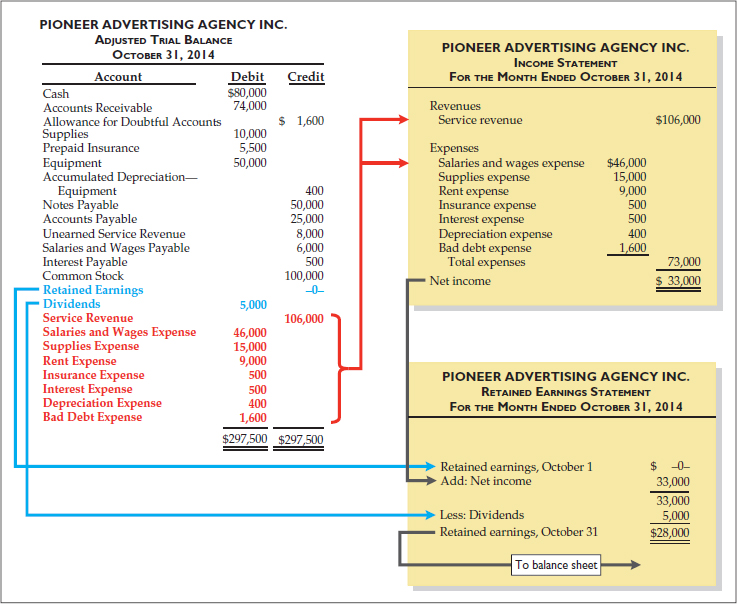
As Illustration 3-35 shows, Pioneer then prepares the balance sheet from the asset and liability accounts, the common stock account, and the ending retained earnings balance as reported in the retained earnings statement.
What do the numbers mean? 24/7 ACCOUNTING
To achieve the vision of “24/7 accounting,” a company must be able to update revenue, income, and balance sheet numbers every day within the quarter and publish them on the Internet. Such real-time reporting responds to the demand for more timely financial information made available to all investors—not just to analysts with access to company management.
Two obstacles typically stand in the way of 24/7 accounting: having the necessary accounting systems to close the books on a daily basis, and reliability concerns associated with unaudited real-time data. Only a few companies have the necessary accounting capabilities. Cisco Systems, which pioneered the concept of the 24-hour close, is one such company.
Closing
Basic Process
LEARNING OBJECTIVE ![]()
Prepare closing entries.
The closing process reduces the balance of nominal (temporary) accounts to zero in order to prepare the accounts for the next period's transactions. In the closing process, Pioneer Advertising transfers all of the revenue and expense account balances (income statement items) to a clearing or suspense account called Income Summary. The Income Summary account matches revenues and expenses.
Pioneer uses this clearing account only at the end of each accounting period. The account represents the net income or net loss for the period. It then transfers this amount (the net income or net loss) to an owners' equity account. (For a corporation, the owners' equity account is retained earnings; for proprietorships and partnerships, it is a capital account.) Companies post all such closing entries to the appropriate general ledger accounts.
Closing Entries
In practice, companies generally prepare closing entries only at the end of a company's annual accounting period. However, to illustrate the journalizing and posting of closing entries, we will assume that Pioneer Advertising closes its books monthly. Illustration 3-36 shows the closing entries at October 31.
A couple of cautions about preparing closing entries. (1) Avoid unintentionally doubling the revenue and expense balances rather than zeroing them. (2) Do not close Dividends through the Income Summary account. Dividends are not expenses, and they are not a factor in determining net income.
Posting Closing Entries
Illustration 3-37 (page 112) shows the posting of closing entries and the underlining (ruling) of accounts. All temporary accounts have zero balances after posting the closing entries. In addition, note that the balance in Retained Earnings represents the accumulated undistributed earnings of Pioneer at the end of the accounting period. Pioneer reports this amount in the balance sheet as the ending amount reported on the retained earnings statement. As noted above, Pioneer uses the Income Summary account only in closing. It does not journalize and post entries to this account during the year.
As part of the closing process, Pioneer totals, balances, and double-underlines the temporary accounts—revenues, expenses, and dividends—as shown in T-account form in Illustration 3-37. It does not close the permanent accounts—assets, liabilities, and stockholders' equity (Common Stock and Retained Earnings). Instead, Pioneer draws a single underline beneath the current period entries for the permanent accounts. The account balance is then entered below the single underline and is carried forward to the next period (see, for example, Retained Earnings).
After the closing process, each income statement account and the dividend account are balanced out to zero and are ready for use in the next accounting period.
Post-Closing Trial Balance
Recall that a trial balance is prepared after entering the regular transactions of the period, and that a second trial balance (the adjusted trial balance) occurs after posting the adjusting entries. A company may take a third trial balance after posting the closing entries. The trial balance after closing is called the post-closing trial balance. The purpose of the post-closing trial balance is to prove the equality of the permanent account balances that the company carries forward into the next accounting period. Since all temporary accounts will have zero balances, the post-closing trial balance will contain only permanent (real)—balance sheet—accounts.
Illustration 3-38 shows the post-closing trial balance of Pioneer Advertising Agency Inc.
A post-closing trial balance provides evidence that the company has properly journalized and posted the closing entries. It also shows that the accounting equation is in balance at the end of the accounting period. However, like the other trial balances, it does not prove that Pioneer has recorded all transactions or that the ledger is correct. For example, the post-closing trial balance will balance if a transaction is not journalized and posted, or if a transaction is journalized and posted twice.
Reversing Entries—An Optional Step
Some accountants prefer to reverse the effects of certain adjusting entries by making a reversing entry at the beginning of the next accounting period. A reversing entry is the exact opposite of the adjusting entry made in the previous period. Use of reversing entries is an optional bookkeeping procedure; it is not a required step in the accounting cycle. Accordingly, we have chosen to cover this topic in Appendix 3B at the end of the chapter.
The Accounting Cycle Summarized
A summary of the steps in the accounting cycle shows a logical sequence of the accounting procedures used during a fiscal period:
- Enter the transactions of the period in appropriate journals.
- Post from the journals to the ledger (or ledgers).
- Take an unadjusted trial balance (trial balance).
- Prepare adjusting journal entries and post to the ledger(s).
- Take a trial balance after adjusting (adjusted trial balance).
- Prepare the financial statements from the second trial balance.
- Prepare closing journal entries and post to the ledger(s).
- Take a post-closing trial balance (optional).
- Prepare reversing entries (optional) and post to the ledger(s).
A company normally completes all of these steps in every fiscal period.
What do the numbers mean? HEY, IT'S COMPLICATED
The economic volatility of the past few years has left companies hungering for more timely and uniform financial information to help them react quickly to fast-changing conditions. As one expert noted, companies were extremely focused on trying to reduce costs and plan for the future better, but a lot of them discovered that they didn't have the information they needed and they didn't have the ability to get that information. The unsteady recession environment also made it risky for companies to interrupt their operations to get new systems up to speed.
So what to do? Try to piecemeal upgrades each year or start a major overhaul of their internal systems? Best Buy, for example, has standardized as many of its systems as possible and has been steadily upgrading them over the past decade. Acquisitions can wreak havoc on reporting systems. Best Buy is choosy about when to standardize for companies it acquires, but it sometimes has to implement new systems after international deals.
In other situations, a major overhaul is needed. For example, it is common for companies with a steady stream of acquisitions to have 50 to 70 general ledger systems. In those cases, a company cannot react well unless its systems are made compatible. So is it the big bang (major overhaul) or the piecemeal approach? It seems to depend. One thing is certain—good accounting systems are a necessity. Without one, the risk of failure is high.
Source: Emily Chasan, “The Financial-Data Dilemma,” Wall Street Journal (July 24, 2012), p. B4.
FINANCIAL STATEMENTS FOR A MERCHANDISING COMPANY
LEARNING OBJECTIVE ![]()
Prepare financial statements for a merchandising company.
Pioneer Advertising Agency Inc. is a service company. In this section, we show a detailed set of financial statements for a merchandising company, Uptown Cabinet Corp. The financial statements (see pages 115–116) are prepared from the adjusted trial balance.
Income Statement
The income statement for Uptown, shown in Illustration 3-39, is self-explanatory. The income statement classifies amounts into such categories as gross profit on sales, income from operations, income before taxes, and net income. Although earnings per share information is required to be shown on the face of the income statement for a corporation, we omit this item here as it will be discussed more fully later in the textbook. For homework problems, do not present earnings per share information unless required to do so.
Statement of Retained Earnings
A corporation may retain the net income earned in the business, or it may distribute it to stockholders by payment of dividends. In Illustration 3-40, Uptown added the net income earned during the year to the balance of retained earnings on January 1, thereby increasing the balance of retained earnings. Deducting dividends of $2,000 results in the ending retained earnings balance of $26,400 on December 31.
Balance Sheet
The balance sheet for Uptown, shown in Illustration 3-41 (page 116), is a classified balance sheet. Interest receivable, inventory, prepaid insurance, and prepaid rent are included as current assets. Uptown considers these assets current because they will be converted into cash or used by the business within a relatively short period of time. Uptown deducts the amount of Allowance for Doubtful Accounts from the total of accounts, notes, and interest receivable because it estimates that only $54,800 of $57,800 will be collected in cash.
In the property, plant, and equipment section, Uptown deducts the Accumulated Depreciation—Equipment from the cost of the equipment. The difference represents the book or carrying value of the equipment.
The balance sheet shows property taxes payable as a current liability because it is an obligation that is payable within a year. The balance sheet also shows other short-term liabilities such as accounts payable.
The bonds payable, due in 2022, are long-term liabilities. As a result, the balance sheet shows the account in a separate section. (The company paid interest on the bonds on December 31.)
Because Uptown is a corporation, the capital section of the balance sheet, called the stockholders' equity section in the illustration, differs somewhat from the capital section for a proprietorship. Total stockholders' equity consists of the common stock, which is the original investment by stockholders, and the earnings retained in the business. For homework purposes, unless instructed otherwise, prepare an unclassified balance sheet.
What do the numbers mean? STATEMENTS, PLEASE
The use of a worksheet at the end of each month or quarter enables a company to prepare interim financial statements even though it closes the books only at the end of each year. For example, assume that Google closes its books on December 31, but it wants monthly financial statements. To do this, at the end of January, Google prepares an adjusted trial balance (using a worksheet as illustrated in Appendix 3C) to supply the information needed for statements for January.
At the end of February, it uses a worksheet again. Note that because Google did not close the accounts at the end of January, the income statement taken from the adjusted trial balance on February 28 will present the net income for two months. If Google wants an income statement for only the month of February, the company obtains it by subtracting the items in the January income statement from the corresponding items in the income statement for the two months of January and February.
If Google executes such a process daily, it can realize “24/7 accounting” (see the “What Do the Numbers Mean?” box on page 110).
Closing Entries
Uptown makes closing entries in its general journal as shown below.
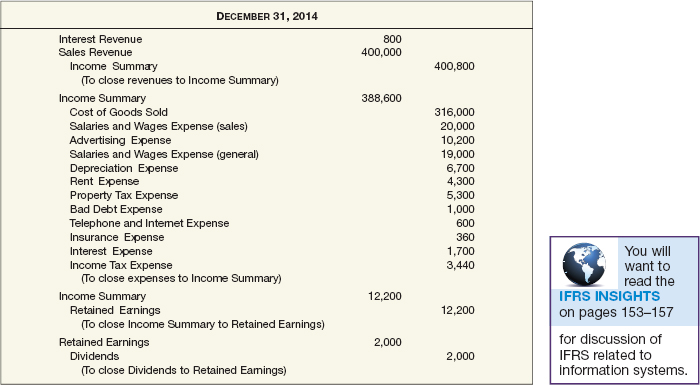
KEY TERMS
account, 84
accounting cycle, 89
accounting information system, 84
accrued expenses, 104
accrued revenues, 103
adjusted trial balance, 85, 108
adjusting entry, 85, 96
balance sheet, 85
book value, 101
closing entries, 85, 111
closing process, 110
contra asset account, 101
credit, 85
debit, 85
depreciation, 100
double-entry accounting, 86
event, 84
financial statements, 85
general journal, 91
general ledger, 85, 91
income statement, 85
journal, 85
journalizing, 85
ledger, 85
nominal accounts, 85
post-closing trial balance, 85, 113
posting, 85, 92
prepaid expenses, 98
real accounts, 85
reversing entries, 113
special journals, 92
statement of cash flows, 85
statement of retained earnings, 85
subsidiary ledger, 85
T-account, 85
transaction, 84
trial balance, 85, 96
unearned revenues, 102
SUMMARY OF LEARNING OBJECTIVES
![]() Understand basic accounting terminology. Understanding the following eleven terms helps in understanding key accounting concepts: (1) Event. (2) Transaction. (3) Account. (4) Real and nominal accounts. (5) Ledger. (6) Journal. (7) Posting. (8) Trial balance. (9) Adjusting entries. (10) Financial statements. (11) Closing entries.
Understand basic accounting terminology. Understanding the following eleven terms helps in understanding key accounting concepts: (1) Event. (2) Transaction. (3) Account. (4) Real and nominal accounts. (5) Ledger. (6) Journal. (7) Posting. (8) Trial balance. (9) Adjusting entries. (10) Financial statements. (11) Closing entries.
![]() Explain double-entry rules. The left side of any account is the debit side; the right side is the credit side. All asset and expense accounts are increased on the left or debit side and decreased on the right or credit side. Conversely, all liability and revenue accounts are increased on the right or credit side and decreased on the left or debit side. Stockholders' equity accounts, Common Stock and Retained Earnings, are increased on the credit side. Dividends is increased on the debit side.
Explain double-entry rules. The left side of any account is the debit side; the right side is the credit side. All asset and expense accounts are increased on the left or debit side and decreased on the right or credit side. Conversely, all liability and revenue accounts are increased on the right or credit side and decreased on the left or debit side. Stockholders' equity accounts, Common Stock and Retained Earnings, are increased on the credit side. Dividends is increased on the debit side.
![]() Identify steps in the accounting cycle. The basic steps in the accounting cycle are (1) identifying and measuring transactions and other events; (2) journalizing; (3) posting; (4) preparing an unadjusted trial balance; (5) making adjusting entries; (6) preparing an adjusted trial balance; (7) preparing financial statements; and (8) closing.
Identify steps in the accounting cycle. The basic steps in the accounting cycle are (1) identifying and measuring transactions and other events; (2) journalizing; (3) posting; (4) preparing an unadjusted trial balance; (5) making adjusting entries; (6) preparing an adjusted trial balance; (7) preparing financial statements; and (8) closing.
![]() Record transactions in journals, post to ledger accounts, and prepare a trial balance. The simplest journal form chronologically lists transactions and events expressed in terms of debits and credits to particular accounts. The items entered in a general journal must be transferred (posted) to the general ledger. Companies should prepare an unadjusted trial balance at the end of a given period after they have recorded the entries in the journal and posted them to the ledger.
Record transactions in journals, post to ledger accounts, and prepare a trial balance. The simplest journal form chronologically lists transactions and events expressed in terms of debits and credits to particular accounts. The items entered in a general journal must be transferred (posted) to the general ledger. Companies should prepare an unadjusted trial balance at the end of a given period after they have recorded the entries in the journal and posted them to the ledger.
![]() Explain the reasons for preparing adjusting entries and identify major types of adjusting entries. Adjustments achieve a proper recognition of revenues and expenses, so as to determine net income for the current period and to achieve an accurate statement of end-of-the-period balances in assets, liabilities, and owners' equity accounts. The major types of adjusting entries are deferrals (prepaid expenses and unearned revenues) and accruals (accrued revenues and accrued expenses).
Explain the reasons for preparing adjusting entries and identify major types of adjusting entries. Adjustments achieve a proper recognition of revenues and expenses, so as to determine net income for the current period and to achieve an accurate statement of end-of-the-period balances in assets, liabilities, and owners' equity accounts. The major types of adjusting entries are deferrals (prepaid expenses and unearned revenues) and accruals (accrued revenues and accrued expenses).
![]() Prepare financial statements from the adjusted trial balance. Companies can prepare financial statements directly from the adjusted trial balance. The income statement is prepared from the revenue and expense accounts. The statement of retained earnings is prepared from the retained earnings account, dividends, and net income (or net loss). The balance sheet is prepared from the asset, liability, and equity accounts.
Prepare financial statements from the adjusted trial balance. Companies can prepare financial statements directly from the adjusted trial balance. The income statement is prepared from the revenue and expense accounts. The statement of retained earnings is prepared from the retained earnings account, dividends, and net income (or net loss). The balance sheet is prepared from the asset, liability, and equity accounts.
![]() Prepare closing entries. In the closing process, the company transfers all of the revenue and expense account balances (income statement items) to a clearing account called Income Summary, which is used only at the end of the fiscal year. Revenues and expenses are matched in the Income Summary account. The net result of this matching represents the net income or net loss for the period. That amount is then transferred to an owners' equity account (Retained Earnings for a corporation and capital accounts for proprietorships and partnerships).
Prepare closing entries. In the closing process, the company transfers all of the revenue and expense account balances (income statement items) to a clearing account called Income Summary, which is used only at the end of the fiscal year. Revenues and expenses are matched in the Income Summary account. The net result of this matching represents the net income or net loss for the period. That amount is then transferred to an owners' equity account (Retained Earnings for a corporation and capital accounts for proprietorships and partnerships).
![]() Prepare financial statements for a merchandising company. The financial statements for a merchandiser differ from those for a service company, as a merchandiser must account for gross profit on sales. The accounting cycle, however, is performed the same.
Prepare financial statements for a merchandising company. The financial statements for a merchandiser differ from those for a service company, as a merchandiser must account for gross profit on sales. The accounting cycle, however, is performed the same.
APPENDIX 3A CASH-BASIS ACCOUNTING VERSUS ACCRUAL-BASIS ACCOUNTING
LEARNING OBJECTIVE ![]()
Differentiate the cash basis of accounting from the accrual basis of accounting.
Most companies use accrual-basis accounting: They recognize revenue when the performance obligation is satisfied and expenses in the period incurred, without regard to the time of receipt or payment of cash.
Some small companies and the average individual taxpayer, however, use a strict or modified cash-basis approach. Under the strict cash basis, companies record revenue only when they receive cash. They record expenses only when they disperse cash. Determining income on the cash basis rests upon collecting revenue and paying expenses. The cash basis ignores two principles: the revenue recognition principle and the expense recognition principle. Consequently, cash-basis financial statements are not in conformity with GAAP.
An illustration will help clarify the differences between accrual-basis and cash-basis accounting. Assume that Quality Contractor signs an agreement to construct a garage for $22,000. In January, Quality begins construction, incurs costs of $18,000 on credit, and by the end of January delivers a finished garage to the buyer. In February, Quality collects $22,000 cash from the customer. In March, Quality pays the $18,000 due the creditors. Illustrations 3A-1 and 3A-2 show the net incomes for each month under cash-basis accounting and accrual-basis accounting.
For the three months combined, total net income is the same under both cash-basis accounting and accrual-basis accounting. The difference is in the timing of revenues and expenses. The basis of accounting also affects the balance sheet. Illustrations 3A-3 and 3A-4 (page 120) show Quality Contractor's balance sheets at each month-end under the cash basis and the accrual basis.
Analysis of Quality's income statements and balance sheets shows the ways in which cash-basis accounting is inconsistent with basic accounting theory:
- The cash basis understates revenues and assets from the construction and delivery of the garage in January. It ignores the $22,000 of accounts receivable, representing a near-term future cash inflow.
- The cash basis understates expenses incurred with the construction of the garage and the liability outstanding at the end of January. It ignores the $18,000 of accounts payable, representing a near-term future cash outflow.
- The cash basis understates owners' equity in January by not recognizing the revenues and the asset until February. It also overstates owners' equity in February by not recognizing the expenses and the liability until March.
In short, cash-basis accounting violates the accrual concept underlying financial reporting.
The modified cash basis is a mixture of the cash basis and the accrual basis. It is based on the strict cash basis but with modifications that have substantial support, such as capitalizing and depreciating plant assets or recording inventory. This method is often followed by professional services firms (doctors, lawyers, accountants, and consultants) and by retail, real estate, and agricultural operations.3
CONVERSION FROM CASH BASIS TO ACCRUAL BASIS
Not infrequently, companies want to convert a cash basis or a modified cash basis set of financial statements to the accrual basis for presentation to investors and creditors. To illustrate this conversion, assume that Dr. Diane Windsor, like many small business owners, keeps her accounting records on a cash basis. In the year 2014, Dr. Windsor received $300,000 from her patients and paid $170,000 for operating expenses, resulting in an excess of cash receipts over disbursements of $130,000 ($300,000 − $170,000). At January 1 and December 31, 2014, she has accounts receivable, unearned service revenue, accrued liabilities, and prepaid expenses as shown in Illustration 3A-5.
Service Revenue Computation
To convert the amount of cash received from patients to service revenue on an accrual basis, we must consider changes in accounts receivable and unearned service revenue during the year. Accounts receivable at the beginning of the year represents revenues recognized last year that are collected this year. Ending accounts receivable indicates revenues recognized this year that are not yet collected. Therefore, to compute revenue on an accrual basis, we subtract beginning accounts receivable and add ending accounts receivable, as the formula in Illustration 3A-6 shows.
Similarly, beginning unearned service revenue represents cash received last year for revenues recognized this year. Ending unearned service revenue results from collections this year that will be recognized as revenue next year. Therefore, to compute revenue on an accrual basis, we add beginning unearned service revenue and subtract ending unearned service revenue, as the formula in Illustration 3A-7 shows.
Therefore, for Dr. Windsor's dental practice, to convert cash collected from customers to service revenue on an accrual basis, we would make the computations shown in Illustration 3A-8.
Operating Expense Computation
To convert cash paid for operating expenses during the year to operating expenses on an accrual basis, we must consider changes in prepaid expenses and accrued liabilities. First, we need to recognize as this year's expenses the amount of beginning prepaid expenses. (The cash payment for these occurred last year.) Therefore, to arrive at operating expense on an accrual basis, we add the beginning prepaid expenses balance to cash paid for operating expenses.
Conversely, ending prepaid expenses result from cash payments made this year for expenses to be reported next year. (Under the accrual basis, Dr. Windsor would have deferred recognizing these payments as expenses until a future period.) To convert these cash payments to operating expenses on an accrual basis, we deduct ending prepaid expenses from cash paid for expenses, as the formula in Illustration 3A-9 shows.
Similarly, beginning accrued liabilities result from expenses recognized last year that require cash payments this year. Ending accrued liabilities relate to expenses recognized this year that have not been paid. To arrive at expenses on an accrual basis, we deduct beginning accrued liabilities and add ending accrued liabilities to cash paid for expenses, as the formula in Illustration 3A-10 shows.
Therefore, for Dr. Windsor's dental practice, to convert cash paid for operating expenses to operating expenses on an accrual basis, we would make the computations shown in Illustration 3A-11.
This entire conversion can be completed in worksheet form, as shown in Illustration 3A-12.
Using this approach, we adjust collections and disbursements on a cash basis to revenue and expense on an accrual basis, to arrive at accrual net income. In any conversion from the cash basis to the accrual basis, depreciation or amortization is an additional expense in arriving at net income on an accrual basis.
THEORETICAL WEAKNESSES OF THE CASH BASIS
The cash basis reports exactly when cash is received and when cash is disbursed. To many people, that information represents something concrete. Isn't cash what it is all about? Does it make sense to invent something, design it, produce it, market and sell it, if you aren't going to get cash for it in the end? Many frequently say, “Cash is the real bottom line,” and also, “Cash is the oil that lubricates the economy.” If so, then what is the merit of accrual accounting?
Today's economy is considerably more lubricated by credit than by cash. The accrual basis, not the cash basis, recognizes all aspects of the credit phenomenon. Investors, creditors, and other decision-makers seek timely information about a company's future cash flows. Accrual-basis accounting provides this information by reporting the cash inflows and outflows associated with earnings activities as soon as these companies can estimate these cash flows with an acceptable degree of certainty. Receivables and payables are forecasters of future cash inflows and outflows. In other words, accrual-basis accounting aids in predicting future cash flows by reporting transactions and other events with cash consequences at the time the transactions and events occur, rather than when the cash is received and paid.
SUMMARY OF LEARNING OBJECTIVE FOR APPENDIX 3A
![]() Differentiate the cash basis of accounting from the accrual basis of accounting. The cash basis of accounting records revenues when cash is received and expenses when cash is paid. The accrual basis recognizes revenue when the performance obligation is satisfied and expenses in the period incurred, without regard to the time of the receipt or payment of cash. Accrual-basis accounting is theoretically preferable because it provides information about future cash inflows and outflows associated with earnings activities as soon as companies can estimate these cash flows with an acceptable degree of certainty. Cash-basis accounting is not in conformity with GAAP.
Differentiate the cash basis of accounting from the accrual basis of accounting. The cash basis of accounting records revenues when cash is received and expenses when cash is paid. The accrual basis recognizes revenue when the performance obligation is satisfied and expenses in the period incurred, without regard to the time of the receipt or payment of cash. Accrual-basis accounting is theoretically preferable because it provides information about future cash inflows and outflows associated with earnings activities as soon as companies can estimate these cash flows with an acceptable degree of certainty. Cash-basis accounting is not in conformity with GAAP.
APPENDIX 3B USING REVERSING ENTRIES
LEARNING OBJECTIVE ![]()
Identify adjusting entries that may be reversed.
Use of reversing entries simplifies the recording of transactions in the next accounting period. The use of reversing entries, however, does not change the amounts reported in the financial statements for the previous period.
ILLUSTRATION OF REVERSING ENTRIES—ACCRUALS
A company most often uses reversing entries to reverse two types of adjusting entries: accrued revenues and accrued expenses. To illustrate the optional use of reversing entries for accrued expenses, we use the following transaction and adjustment data.
- October 24 (initial salaries and wages entry): Paid $4,000 of salaries and wages incurred between October 10 and October 24.
- October 31 (adjusting entry): Incurred salaries and wages between October 25 and October 31 of $1,200, to be paid in the November 8 payroll.
- November 8 (subsequent salaries and wages entry): Paid salaries and wages of $2,500. Of this amount, $1,200 applied to accrued salaries and wages payable at October 31 and $1,300 to salaries and wages payable for November 1 through November 8.
Illustration 3B-1 shows the comparative entries.
The comparative entries show that the first three entries are the same whether or not the company uses reversing entries. The last two entries differ. The November 1 reversing entry eliminates the $1,200 balance in Salaries and Wages Payable, created by the October 31 adjusting entry. The reversing entry also creates a $1,200 credit balance in the Salaries and Wages Expense account. As you know, it is unusual for an expense account to have a credit balance. However, the balance is correct in this instance. Why? Because the company will debit the entire amount of the first salaries and wages payment in the new accounting period to Salaries and Wages Expense. This debit eliminates the credit balance. The resulting debit balance in the expense account will equal the salaries and wages expense incurred in the new accounting period ($1,300 in this example).
When a company makes reversing entries, it debits all cash payments of expenses to the related expense account. This means that on November 8 (and every payday), the company debits Salaries and Wages Expense for the amount paid without regard to the existence of any accrued salaries and wages payable. Repeating the same entry simplifies the recording process in an accounting system.
ILLUSTRATION OF REVERSING ENTRIES—DEFERRALS
Up to this point, we assumed the recording of all deferrals as prepaid expense or unearned revenue. In some cases, though, a company records deferrals directly in expense or revenue accounts. When this occurs, a company may also reverse deferrals.
To illustrate the use of reversing entries for prepaid expenses, we use the following transaction and adjustment data.
- December 10 (initial entry): Purchased $20,000 of office supplies with cash.
- December 31 (adjusting entry): Determined that $5,000 of office supplies are on hand.
Illustration 3B-2 (page 126) shows the comparative entries.
After the adjusting entry on December 31 (regardless of whether using reversing entries), the asset account Supplies shows a balance of $5,000, and Supplies Expense shows a balance of $15,000. If the company initially debits Supplies Expense when it purchases the supplies, it then makes a reversing entry to return to the expense account the cost of unconsumed supplies. The company then continues to debit Supplies Expense for additional purchases of supplies during the next period.
Deferrals are generally entered in real accounts (assets and liabilities), thus making reversing entries unnecessary. This approach is used because it is advantageous for items that a company needs to apportion over several periods (e.g., supplies and parts inventories). However, for other items that do not follow this regular pattern and that may or may not involve two or more periods, a company ordinarily enters them initially in revenue or expense accounts. The revenue and expense accounts may not require adjusting, and the company thus systematically closes them to Income Summary.
Using the nominal accounts adds consistency to the accounting system. It also makes the recording more efficient, particularly when a large number of such transactions occur during the year. For example, the bookkeeper knows to expense invoice items (except for capital asset acquisitions). He or she need not worry whether an item will result in a prepaid expense at the end of the period because the company will make adjustments at the end of the period.
SUMMARY OF REVERSING ENTRIES
We summarize guidelines for reversing entries as follows.
- All accruals should be reversed.
- All deferrals for which a company debited or credited the original cash transaction to an expense or revenue account should be reversed.
- Adjusting entries for depreciation and bad debts are not reversed.
Recognize that reversing entries do not have to be used. Therefore, some accountants avoid them entirely.
SUMMARY OF LEARNING OBJECTIVE FOR APPENDIX 3B
![]() Identify adjusting entries that may be reversed. Reversing entries are most often used to reverse two types of adjusting entries: accrued revenues and accrued expenses. Deferrals may also be reversed if the initial entry to record the transaction is made to an expense or revenue account.
Identify adjusting entries that may be reversed. Reversing entries are most often used to reverse two types of adjusting entries: accrued revenues and accrued expenses. Deferrals may also be reversed if the initial entry to record the transaction is made to an expense or revenue account.
APPENDIX 3C USING A WORKSHEET: THE ACCOUNTING CYCLE REVISITED
In this appendix, we provide an additional illustration of the end-of-period steps in the accounting cycle and illustrate the use of a worksheet in this process. Using a worksheet often facilitates the end-of-period (monthly, quarterly, or annually) accounting and reporting process. Use of a worksheet helps a company prepare the financial statements on a more timely basis. How? With a worksheet, a company need not wait until it journalizes and posts the adjusting and closing entries.
A company prepares a worksheet either on columnar paper or within a computer spreadsheet. In either form, a company uses the worksheet to adjust account balances and to prepare financial statements.
The worksheet does not replace the financial statements. Instead, it is an informal device for accumulating and sorting information needed for the financial statements. Completing the worksheet provides considerable assurance that a company properly handled all of the details related to the end-of-period accounting and statement preparation. The 10-column worksheet in Illustration 3C-1 (on page 128) provides columns for the first trial balance, adjustments, adjusted trial balance, income statement, and balance sheet.
WORKSHEET COLUMNS
Trial Balance Columns
Uptown Cabinet Corp., shown in Illustration 3C-1 (page 128), obtains data for the trial balance from its ledger balances at December 31. The amount for Inventory, $40,000, is the year-end inventory amount, which results from the application of a perpetual inventory system.
Adjustments Columns
After Uptown enters all adjustment data on the worksheet, it establishes the equality of the adjustment columns. It then extends the balances in all accounts to the adjusted trial balance columns.
ADJUSTMENTS ENTERED ON THE WORKSHEET
Items (a) through (g) below serve as the basis for the adjusting entries made in the worksheet for Uptown shown in Illustration 3C-1.
(a) Depreciation of equipment at the rate of 10 percent per year based on original cost of $67,000.
(b) Estimated bad debts of one-quarter of 1 percent of sales ($400,000).
(c) Insurance expired during the year $360.
(d) Interest accrued on notes receivable as of December 31, $800.
(e) The Rent Expense account contains $500 rent paid in advance, which is applicable to next year.
(f) Property taxes accrued December 31, $2,000.
(g) Income taxes payable estimated $3,440.
The adjusting entries shown on the December 31, 2014, worksheet are as follows.
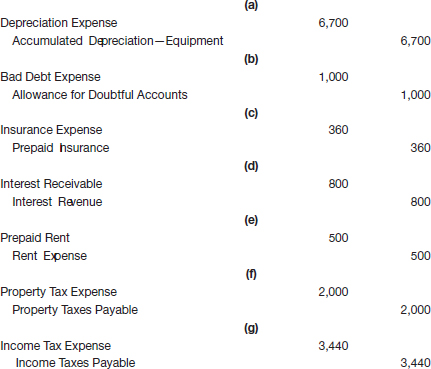
Uptown Cabinet transfers the adjusting entries to the Adjustments columns of the worksheet, often designating each by letter. The trial balance lists any new accounts resulting from the adjusting entries, as illustrated on the worksheet. (For example, see the accounts listed in rows 32 through 40 in Illustration 3C-1.) Uptown then totals and balances the Adjustments columns.
Adjusted Trial Balance
The adjusted trial balance shows the balance of all accounts after adjustment at the end of the accounting period. For example, Uptown adds the $2,000 shown opposite the Allowance for Doubtful Accounts in the Trial Balance Cr. column to the $1,000 in the Adjustments Cr. column. The company then extends the $3,000 total to the Adjusted Trial Balance Cr. column. Similarly, Uptown reduces the $900 debit opposite Prepaid Insurance by the $360 credit in the Adjustments column. The result, $540, is shown in the Adjusted Trial Balance Dr. column.
Income Statement and Balance Sheet Columns
Uptown extends all the debit items in the Adjusted Trial Balance columns into the Income Statement or Balance Sheet columns to the right. It similarly extends all the credit items.
The next step is to total the Income Statement columns. Uptown needs the amount of net income or loss for the period to balance the debit and credit columns. The net income of $12,200 is shown in the Income Statement Dr. column because revenues exceeded expenses by that amount.
Uptown then balances the Income Statement columns. The company also enters the net income of $12,200 in the Balance Sheet Cr. column as an increase in retained earnings.
PREPARING FINANCIAL STATEMENTS FROM A WORKSHEET
The worksheet provides the information needed for preparation of the financial statements without reference to the ledger or other records. In addition, the worksheet sorts that data into appropriate columns, which facilitates the preparation of the statements. The financial statements of Uptown Cabinet are shown in Chapter 3 (pages 115–116).
KEY TERMS
worksheet, 127
SUMMARY OF LEARNING OBJECTIVE FOR APPENDIX 3C
![]() Prepare a 10-column worksheet. The 10-column worksheet provides columns for the first trial balance, adjustments, adjusted trial balance, income statement, and balance sheet. The worksheet does not replace the financial statements. Instead, it is an informal device for accumulating and sorting information needed for the financial statements.
Prepare a 10-column worksheet. The 10-column worksheet provides columns for the first trial balance, adjustments, adjusted trial balance, income statement, and balance sheet. The worksheet does not replace the financial statements. Instead, it is an informal device for accumulating and sorting information needed for the financial statements.
DEMONSTRATION PROBLEM
Nalezny Advertising Agency was founded by Casey Hayward in January 2005. Presented below are both the adjusted and unadjusted trial balances as of December 31, 2014.
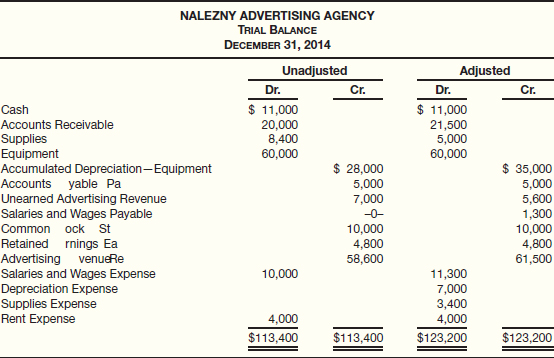
Instructions
(a) Journalize the annual adjusting entries that were made.
(b) Prepare an income statement for the year ending December 31, 2014, and a balance sheet at December 31.
(c) Describe the remaining steps in the accounting cycle to be completed by Nalezny for 2014.
Be sure to check the book's companion website for a Review and Analysis Exercise, with solution.
![]() Brief Exercises, Exercises, Problems, and many more learning and assessment tools and resources are available for practice in WileyPLUS.
Brief Exercises, Exercises, Problems, and many more learning and assessment tools and resources are available for practice in WileyPLUS.
Note: All asterisked Questions, Exercises, and Problems relate to material in the appendices to the chapter.
QUESTIONS
- Give an example of a transaction that results in:
(a) A decrease in an asset and a decrease in a liability.
(b) A decrease in one asset and an increase in another asset.
(c) A decrease in one liability and an increase in another liability.
- Do the following events represent business transactions? Explain your answer in each case.
(a) A computer is purchased on account.
(b) A customer returns merchandise and is given credit on account.
(c) A prospective employee is interviewed.
(d) The owner of the business withdraws cash from the business for personal use.
(e) Merchandise is ordered for delivery next month.
- Name the accounts debited and credited for each of the following transactions.
(a) Billing a customer for work done.
(b) Receipt of cash from customer on account.
(c) Purchase of office supplies on account.
(d) Purchase of 15 gallons of gasoline for the delivery truck.
- Why are revenue and expense accounts called temporary or nominal accounts?
- Andrea Pafko, a fellow student, contends that the double-entry system means that each transaction must be recorded twice. Is Andrea correct? Explain.
- Is it necessary that a trial balance be taken periodically? What purpose does it serve?
- Indicate whether each of the following items is a real or nominal account and whether it appears in the balance sheet or the income statement.
(a) Prepaid Rent.
(b) Salaries and Wages Payable.
(c) Inventory.
(d) Accumulated Depreciation—Equipment.
(e) Equipment.
(f) Service Revenue.
(g) Salaries and Wages Expense.
(h) Supplies.
- Employees are paid every Saturday for the preceding work week. If a balance sheet is prepared on Wednesday, December 31, what does the amount of wages earned during the first three days of the week (12/29, 12/30, 12/31) represent? Explain.
- (a) How are the components of revenues and expenses different for a merchandising company? (b) Explain the income measurement process of a merchandising company.
- What differences are there between the trial balance before closing and the trial balance after closing with respect to the following accounts?
(a) Accounts Payable.
(b) Expense accounts.
(c) Revenue accounts.
(d) Retained Earnings account.
(e) Cash.
- What are adjusting entries and why are they necessary?
- What are closing entries and why are they necessary?
- Jay Hawk, maintenance supervisor for Boston Insurance Co., has purchased a riding lawnmower and accessories to be used in maintaining the grounds around corporate headquarters. He has sent the following information to the accounting department.
Compute the amount of depreciation expense (related to the mower and accessories) that should be reported on Boston's December 31, 2014, income statement. Assume straight-line depreciation.
- Midwest Enterprises made the following entry on December 31, 2014.

What entry would Anaheim National Bank make regarding its outstanding loan to Midwest Enterprises? Explain why this must be the case.
- * Distinguish between cash-basis accounting and accrual-basis accounting. Why is accrual-basis accounting acceptable for most businesses and the cash-basis unacceptable in the preparation of an income statement and a balance sheet?
- * When salaries and wages expense for the year is computed, why are beginning accrued salaries and wages subtracted from, and ending accrued salaries and wages added to, salaries and wages paid during the year?
- * List two types of transactions that would receive different accounting treatment using (a) strict cash-basis accounting, and (b) a modified cash basis.
- * What are reversing entries, and why are they used?
- * “A worksheet is a permanent accounting record, and its use is required in the accounting cycle.” Do you agree? Explain.
BRIEF EXERCISES
![]()
BE3-1 Transactions for Mehta Company for the month of May are presented below. Prepare journal entries for each of these transactions. (You may omit explanations.)
| May 1 | B.D. Mehta invests $4,000 cash in exchange for common stock in a small welding corporation. |
| 3 | Buys equipment on account for $1,100. |
| 13 | Pays $400 to landlord for May rent. |
| 21 | Bills Noble Corp. $500 for welding work done. |
![]()
BE3-2 Agazzi Repair Shop had the following transactions during the first month of business as a proprietorship. Journalize the transactions. (Omit explanations.)
| Aug. 2 | Invested $12,000 cash and $2,500 of equipment in the business. |
| 7 | Purchased supplies on account for $500. (Debit asset account.) |
| 12 | Performed services for clients, for which $1,300 was collected in cash and $670 was billed to the clients. |
| 15 | Paid August rent $600. |
| 19 | Counted supplies and determined that only $270 of the supplies purchased on August 7 are still on hand. |
![]()
![]()
BE3-3 On July 1, 2014, Crowe Co. pays $15,000 to Zubin Insurance Co. for a 3-year insurance policy. Both companies have fiscal years ending December 31. For Crowe Co., journalize the entry on July 1 and the adjusting entry on December 31.
![]()
![]()
BE3-4 Using the data in BE3-3, journalize the entry on July 1 and the adjusting entry on December 31 for Zubin Insurance Co. Zubin uses the accounts Unearned Service Revenue and Service Revenue.
![]()
![]()
BE3-5 Assume that on February 1, Procter & Gamble (P&G paid $720,000 in advance for 2 years' insurance coverage. Prepare P&G's February 1 journal entry and the annual adjusting entry on June 30.
![]()
![]()
BE3-6 LaBouche Corporation owns a warehouse. On November 1, it rented storage space to a lessee (tenant) for 3 months for a total cash payment of $2,400 received in advance. Prepare LaBouche's November 1 journal entry and the December 31 annual adjusting entry.
![]()
![]()
BE3-7 Dresser Company's weekly payroll, paid on Fridays, totals $8,000. Employees work a 5-day week. Prepare Dresser's adjusting entry on Wednesday, December 31, and the journal entry to record the $8,000 cash payment on Friday, January 2.
![]()
BE3-8 Included in Gonzalez Company's December 31 trial balance is a note receivable of $12,000. The note is a 4-month, 10% note dated October 1. Prepare Gonzalez's December 31 adjusting entry to record $300 of accrued interest, and the February 1 journal entry to record receipt of $12,400 from the borrower.
BE3-9 Prepare the following adjusting entries at August 31 for Walgreens.
(a) Interest on notes payable of $300 is accrued.
(b) Services performed but unbilled total $1,400.
(c) Salaries and wages earned by employees of $700 have not been recorded.
(d) Bad debt expense for year is $900.
Use the following account titles: Service Revenue, Accounts Receivable, Interest Expense, Interest Payable, Salaries and Wages Expense, Salaries and Wages Payable, Allowance for Doubtful Accounts, and Bad Debt Expense.
![]()
BE3-10 At the end of its first year of operations, the trial balance of Alonzo Company shows Equipment $30,000 and zero balances in Accumulated Depreciation—Equipment and Depreciation Expense. Depreciation for the year is estimated to be $2,000. Prepare the adjusting entry for depreciation at December 31, and indicate the balance sheet presentation for the equipment at December 31.
![]()
BE3-11 Side Kicks has year-end account balances of Sales Revenue $808,900; Interest Revenue $13,500; Cost of Goods Sold $556,200; Administrative Expenses $189,000; Income Tax Expense $35,100; and Dividends $18,900. Prepare the year-end closing entries.
![]()
*BE3-12 Kelly Company had cash receipts from customers in 2014 of $142,000. Cash payments for operating expenses were $97,000. Kelly has determined that at January 1, accounts receivable was $13,000, and prepaid expenses were $17,500. At December 31, accounts receivable was $18,600, and prepaid expenses were $23,200. Compute (a) service revenue and (b) operating expenses.
![]()
*BE3-13 Assume that Best Buy made a December 31 adjusting entry to debit Salaries and Wages Expense and credit Salaries and Wages Payable for $4,200 for one of its departments. On January 2, Best Buy paid the weekly payroll of $7,000. Prepare Best Buy's (a) January 1 reversing entry; (b) January 2 entry (assuming the reversing entry was prepared); and (c) January 2 entry (assuming the reversing entry was not prepared).
EXERCISES
![]()
E3-1 (Transaction Analysis—Service Company) Beverly Crusher is a licensed CPA. During the first month of operations of her business (a sole proprietorship), the following events and transactions occurred.
| April 2 | Invested $32,000 cash and equipment valued at $14,000 in the business. |
| 2 | Hired a secretary-receptionist at a salary of $290 per week payable monthly. |
| 3 | Purchased supplies on account $700. (Debit an asset account.) |
| 7 | Paid office rent of $600 for the month. |
| 11 | Completed a tax assignment and billed client $1,100 for services rendered. (Use Service Revenue account.) |
| 12 | Received $3,200 advance on a management consulting engagement. |
| 17 | Received cash of $2,300 for services completed for Ferengi Co. |
| 21 | Paid insurance expense $110. |
| 30 | Paid secretary-receptionist $1,160 for the month. |
| 30 | A count of supplies indicated that $120 of supplies had been used. |
| 30 | Purchased a new computer for $6,100 with personal funds. (The computer will be used exclusively for business purposes.) |
Instructions
Journalize the transactions in the general journal. (Omit explanations.)
![]()
E3-2 (Corrected Trial Balance) The trial balance of Wanda Landowska Company (shown on the next page) does not balance. Your review of the ledger reveals the following. (a) Each account had a normal balance. (b) The debit footings in Prepaid Insurance, Accounts Payable, and Property Tax Expense were each understated $100. (c) A transposition error was made in Accounts Receivable and Service Revenue; the correct balances for Accounts Receivable and Service Revenue are $2,750 and $6,690, respectively. (d) A debit posting to Advertising Expense of $300 was omitted. (e) A $1,500 cash drawing by the owner was debited to Owner's Capital and credited to Cash.
Instructions
Prepare a correct trial balance.
![]()
E3-3 (Corrected Trial Balance) The trial balance of Blues Traveler Corporation does not balance.
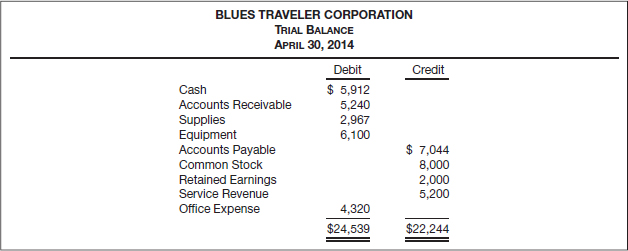
An examination of the ledger shows these errors.
- Cash received from a customer on account was recorded (both debit and credit) as $1,380 instead of $1,830.
- The purchase on account of a computer costing $3,200 was recorded as a debit to Office Expense and a credit to Accounts Payable.
- Services were performed on account for a client, $2,250, for which Accounts Receivable was debited $2,250 and Service Revenue was credited $225.
- A payment of $95 for telephone charges was entered as a debit to Office Expense and a debit to Cash.
- The Service Revenue account was totaled at $5,200 instead of $5,280.
Instructions
From this information prepare a corrected trial balance.
![]()
E3-4 (Corrected Trial Balance) The trial balance of Watteau Co. (shown on the next page) does not balance.
Each of the listed accounts should have a normal balance per the general ledger. An examination of the ledger and journal reveals the following errors.
- Cash received from a customer on account was debited for $570, and Accounts Receivable was credited for the same amount. The actual collection was for $750.
- The purchase of a computer printer on account for $500 was recorded as a debit to Supplies for $500 and a credit to Accounts Payable for $500.
- Services were performed on account for a client for $890. Accounts Receivable was debited for $890 and Service Revenue was credited for $89.
- A payment of $65 for telephone charges was recorded as a debit to Office Expense for $65 and a debit to Cash for $65.
- When the Unearned Service Revenue account was reviewed, it was found that service revenue amounting to $325 was performed prior to June 30 (related to Unearned Service Revenue).
- A debit posting to Salaries and Wages Expense of $670 was omitted.
- A payment on account for $206 was credited to Cash for $206 and credited to Accounts Payable for $260.
- A dividend of $575 was debited to Salaries and Wages Expense for $575 and credited to Cash for $575.
Instructions
Prepare a correct trial balance. (Note: It may be necessary to add one or more accounts to the trial balance.)
![]()

E3-5 (Adjusting Entries) The ledger of Duggan Rental Agency on March 31 of the current year includes the following selected accounts before adjusting entries have been prepared.

An analysis of the accounts shows the following.
- The equipment depreciates $250 per month.
- One-third of the unearned rent was recognized as revenue during the quarter.
- Interest of $500 is accrued on the notes payable.
- Supplies on hand total $850.
- Insurance expires at the rate of $300 per month.
Prepare the adjusting entries at March 31, assuming that adjusting entries are made quarterly. Additional accounts are Depreciation Expense, Insurance Expense, Interest Payable, and Supplies Expense. (Omit explanations.)
![]()
E3-6 (Adjusting Entries) Karen Weller, D.D.S., opened a dental practice on January 1, 2014. During the first month of operations, the following transactions occurred.
- Performed services for patients who had dental plan insurance. At January 31, $750 of such services was performed but not yet billed to the insurance companies.
- Utility expenses incurred but not paid prior to January 31 totaled $520.
- Purchased dental equipment on January 1 for $80,000, paying $20,000 in cash and signing a $60,000, 3-year note payable. The equipment depreciates $400 per month. Interest is $500 per month.
- Purchased a one-year malpractice insurance policy on January 1 for $12,000.
- Purchased $1,600 of dental supplies. On January 31, determined that $500 of supplies were on hand.
Instructions
Prepare the adjusting entries on January 31. (Omit explanations.) Account titles are Accumulated Depreciation—Equipment, Depreciation Expense, Service Revenue, Accounts Receivable, Insurance Expense, Interest Expense, Interest Payable, Prepaid Insurance, Supplies, Supplies Expense, Utilities Expense, and Accounts Payable.
![]()
E3-7 (Analyze Adjusted Data) A partial adjusted trial balance of Piper Company at January 31, 2014, shows the following.

Instructions
Answer the following questions, assuming the year begins January 1.
(a) If the amount in Supplies Expense is the January 31 adjusting entry, and $850 of supplies was purchased in January, what was the balance in Supplies on January 1?
(b) If the amount in Insurance Expense is the January 31 adjusting entry, and the original insurance premium was for one year, what was the total premium and when was the policy purchased?
(c) If $2,500 of salaries was paid in January, what was the balance in Salaries and Wages Payable at December 31, 2013?
(d) If $1,600 was received in January for services performed in January, what was the balance in Unearned Service Revenue at December 31, 2013?
![]()

E3-8 (Adjusting Entries) Andy Roddick is the new owner of Ace Computer Services. At the end of August 2014, his first month of ownership, Roddick is trying to prepare monthly financial statements. Below is some information related to unrecorded expenses that the business incurred during August.
- At August 31, Roddick owed his employees $1,900 in wages that will be paid on September 1.
- At the end of the month, he had not yet received the month's utility bill. Based on past experience, he estimated the bill would be approximately $600.
- On August 1, Roddick borrowed $30,000 from a local bank on a 15-year mortgage. The annual interest rate is 8%.
- A telephone bill in the amount of $117 covering August charges is unpaid at August 31.
Instructions
Prepare the adjusting journal entries as of August 31, 2014, suggested by the information above.
E3-9 (Adjusting Entries) Selected accounts of Urdu Company are shown below.

Instructions
From an analysis of the T-accounts, reconstruct (a) the October transaction entries, and (b) the adjusting journal entries that were made on October 31, 2014. Prepare explanations for each journal entry.
![]()
E3-10 (Adjusting Entries) Greco Resort opened for business on June 1 with eight air-conditioned units. Its trial balance on August 31 is as follows.

Other data:
- The balance in prepaid insurance is a one-year premium paid on June 1, 2014.
- An inventory count on August 31 shows $450 of supplies on hand.
- Annual depreciation rates are buildings (4%) and equipment (10%). Salvage value is estimated to be 10% of cost.
- Unearned Rent Revenue of $3,800 was earned prior to August 31.
- Salaries of $375 were unpaid at August 31.
- Rentals of $800 were due from tenants at August 31.
- The mortgage interest rate is 8% per year.
(a) Journalize the adjusting entries on August 31 for the 3-month period June 1–August 31. (Omit explanations.)
(b) Prepare an adjusted trial balance on August 31.
![]()
E3-11 (Prepare Financial Statements) The adjusted trial balance of Anderson Cooper Co. as of December 31, 2014, contains the following.

Instructions
(a) Prepare an income statement.
(b) Prepare a statement of retained earnings.
(c) Prepare a classified balance sheet.
![]()
E3-12 (Prepare Financial Statements) Santo Design Agency was founded by Thomas Grant in January 2008. Presented below is the adjusted trial balance as of December 31, 2014.
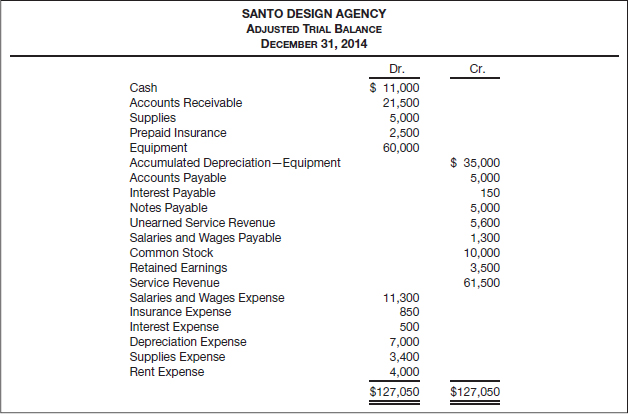
(a) Prepare an income statement and a statement of retained earnings for the year ending December 31, 2014, and an unclassified balance sheet at December 31.
(b) Answer the following questions.
(1) If the note has been outstanding 6 months, what is the annual interest rate on that note?
(2) If the company paid $17,500 in salaries in 2014, what was the balance in Salaries and Wages Payable on December 31, 2013?
![]()
![]()
E3-13 (Closing Entries) The adjusted trial balance of Lopez Company shows the following data pertaining to sales at the end of its fiscal year, October 31, 2014: Sales Revenue $800,000, Delivery Expense $12,000, Sales Returns and Allowances $24,000, and Sales Discounts $15,000.
Instructions
(a) Prepare the revenues section of the income statement.
(b) Prepare separate closing entries for (1) sales and (2) the contra accounts to sales.
![]()
![]()
E3-14 (Closing Entries) Presented below is information related to Gonzales Corporation for the month of January 2014.

Instructions
Prepare the necessary closing entries.
![]()
E3-15 (Missing Amounts) Presented below is financial information for two different companies.

Instructions
Compute the missing amounts.
![]()
E3-16 (Closing Entries for a Corporation) Presented below are selected account balances for Homer Winslow Co. as of December 31, 2014.

Instructions
Prepare closing entries for Homer Winslow Co. on December 31, 2014. (Omit explanations.)
![]()
E3-17 (Transactions of a Corporation, Including Investment and Dividend) Scratch Miniature Golf and Driving Range Inc. was opened on March 1 by Scott Verplank. The following selected events and transactions occurred during March.
| Mar. 1 | Invested $50,000 cash in the business in exchange for common stock. |
| 3 | Purchased Michelle Wie's Golf Land for $38,000 cash. The price consists of land $10,000, building $22,000, and equipment $6,000. (Make one compound entry.) |
| 5 | Advertised the opening of the driving range and miniature golf course, paying advertising expenses of $1,600. |
| 6 | Paid cash $1,480 for a one-year insurance policy. |
| 10 | Purchased golf equipment for $2,500 from Singh Company, payable in 30 days. |
| Mar. 18 | Received golf fees of $1,200 in cash. |
| 25 | Declared and paid a $500 cash dividend. |
| 30 | Paid wages of $900. |
| 30 | Paid Singh Company in full. |
| 31 | Received $750 of fees in cash. |
Scratch uses the following accounts: Cash, Prepaid Insurance, Land, Buildings, Equipment, Accounts Payable, Common Stock, Dividends, Service Revenue, Advertising Expense, and Salaries and Wages Expense.
Instructions
Journalize the March transactions. (Provide explanations for the journal entries.)
![]()
*E3-18 (Cash to Accrual Basis) Jill Accardo, M.D., maintains the accounting records of Accardo Clinic on a cash basis. During 2014, Dr. Accardo collected $142,600 from her patients and paid $55,470 in expenses. At January 1, 2014, and December 31, 2014, she had accounts receivable, unearned service revenue, accrued expenses, and prepaid expenses as follows. (All long-lived assets are rented.)

Instructions
Prepare a schedule that converts Dr. Accardo's “excess of cash collected over cash disbursed” for the year 2014 to net income on an accrual basis for the year 2014.
![]()
*E3-19 (Cash and Accrual Basis) Wayne Rogers Corp. maintains its financial records on the cash basis of accounting. Interested in securing a long-term loan from its regular bank, Wayne Rogers Corp. requests you as its independent CPA to convert its cash-basis income statement data to the accrual basis. You are provided with the following summarized data covering 2013, 2014, and 2015.
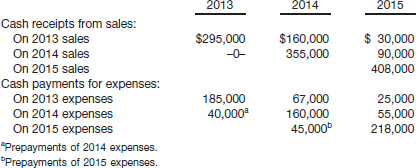
Instructions
(a) Using the data above, prepare abbreviated income statements for the years 2013 and 2014 on the cash basis.
(b) Using the data above, prepare abbreviated income statements for the years 2013 and 2014 on the accrual basis.
![]()
![]()
*E3-20 (Adjusting and Reversing Entries) When the accounts of Daniel Barenboim Inc. are examined, the adjusting data listed below are uncovered on December 31, the end of an annual fiscal period.
- The prepaid insurance account shows a debit of $5,280, representing the cost of a 2-year fire insurance policy dated August 1 of the current year.
- On November 1, Rent Revenue was credited for $1,800, representing revenue from a subrental for a 3-month period beginning on that date.
- Purchase of advertising materials for $800 during the year was recorded in the Advertising Expense account. On December 31, advertising materials of $290 are on hand.
- Interest of $770 has accrued on notes payable.
Instructions
Prepare the following in general journal form.
(a) The adjusting entry for each item.
(b) The reversing entry for each item where appropriate.
*E3-21 (Worksheet) Presented below are selected accounts for Alvarez Company as reported in the worksheet at the end of May 2014.
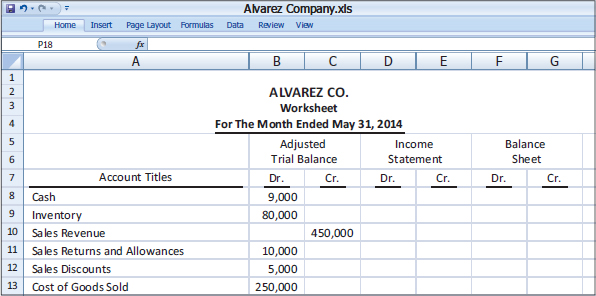
Instructions
Complete the worksheet by extending amounts reported in the adjusted trial balance to the appropriate columns in the worksheet. Do not total individual columns.
![]()
*E3-22 (Worksheet and Balance Sheet Presentation) The adjusted trial balance for Ed Bradley Co. is presented in the following worksheet for the month ended April 30, 2014.
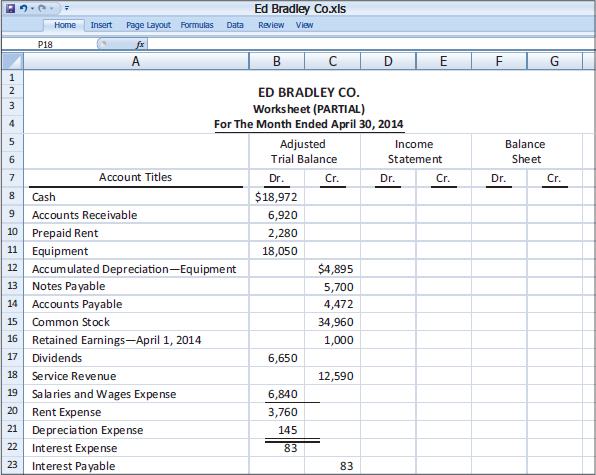
Instructions
Complete the worksheet and prepare a classified balance sheet.
*E3-23 (Partial Worksheet Preparation) Jurassic Park Co. prepares monthly financial statements from a worksheet. Selected portions of the January worksheet showed the following data.
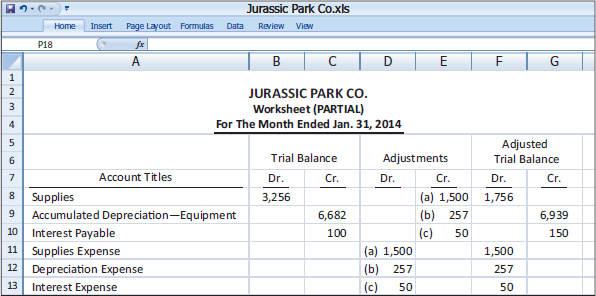
During February, no events occurred that affected these accounts. But at the end of February, the following information was available.
![]()
Instructions
Reproduce the data that would appear in the February worksheet, and indicate the amounts that would be shown in the January income statement.
EXERCISES SET B
See the book's companion website, at www.wiley.com/college/kieso, for an additional set of exercises.
PROBLEMS
![]()
![]()
![]()
P3-1 (Transactions, Financial Statements—Service Company) Listed below are the transactions of Yasunari Kawabata, D.D.S., for the month of September.
| Sept. 1 | Kawabata begins practice as a dentist and invests $20,000 cash. |
| 2 | Purchases dental equipment on account from Green Jacket Co. for $17,280. |
| 4 | Pays rent for office space, $680 for the month. |
| 4 | Employs a receptionist, Michael Bradley. |
| 5 | Purchases dental supplies for cash, $942. |
| 8 | Receives cash of $1,690 from patients for services performed. |
| 10 | Pays miscellaneous office expenses, $430. |
| 14 | Bills patients $5,820 for services performed. |
| 18 | Pays Green Jacket Co. on account, $3,600. |
| 19 | Withdraws $3,000 cash from the business for personal use. |
| 20 | Receives $980 from patients on account. |
| 25 | Bills patients $2,110 for services performed. |
| 30 | Pays the following expenses in cash: Salaries and wages $1,800; miscellaneous office expenses $85. |
| 30 | Dental supplies used during September, $330. |
(a) Enter the transactions shown above in appropriate general ledger accounts (use T-accounts). Use the following ledger accounts: Cash, Accounts Receivable, Supplies, Equipment, Accumulated Depreciation—Equipment, Accounts Payable, Owner's Capital, Service Revenue, Rent Expense, Office Expense, Salaries and Wages Expense, Supplies Expense, Depreciation Expense, and Income Summary. Allow 10 lines for the Cash and Income Summary accounts, and 5 lines for each of the other accounts needed. Record depreciation using a 5-year life on the equipment, the straight-line method, and no salvage value. Do not use a drawing account.
(b) Prepare a trial balance.
(c) Prepare an income statement, a statement of owner's equity, and an unclassified balance sheet.
(d) Close the ledger.
(e) Prepare a post-closing trial balance.
![]()
![]()

P3-2 (Adjusting Entries and Financial Statements) Mason Advertising Agency was founded in January 2010. Presented below are adjusted and unadjusted trial balances as of December 31, 2014.
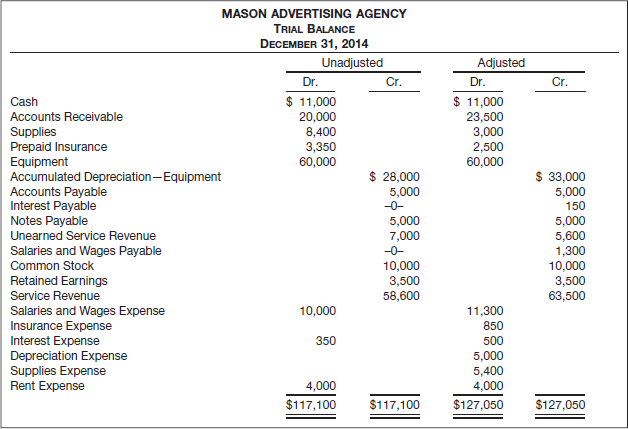
Instructions
(a) Journalize the annual adjusting entries that were made. (Omit explanations.)
(b) Prepare an income statement and a statement of retained earnings for the year ending December 31, 2014, and an unclassified balance sheet at December 31.
(c) Answer the following questions.
(1) If the note has been outstanding 3 months, what is the annual interest rate on that note?
(2) If the company paid $12,500 in salaries and wages in 2014, what was the balance in Salaries and Wages Payable on December 31, 2013?
![]()
P3-3 (Adjusting Entries) A review of the ledger of Baylor Company at December 31, 2014, produces the following data pertaining to the preparation of annual adjusting entries.
- Salaries and Wages Payable $0. There are eight employees. Salaries and wages are paid every Friday for the current week. Five employees receive $700 each per week, and three employees earn $600 each per week. December 31 is a Tuesday. Employees do not work weekends. All employees worked the last 2 days of December.
- Unearned Rent Revenue $429,000. The company began subleasing office space in its new building on November 1. Each tenant is required to make a $5,000 security deposit that is not refundable until occupancy is terminated. At December 31, the company had the following rental contracts that are paid in full for the entire term of the lease.

- Prepaid Advertising $13,200. This balance consists of payments on two advertising contracts. The contracts provide for monthly advertising in two trade magazines. The terms of the contracts are as shown below.

The first advertisement runs in the month in which the contract is signed.
- Notes Payable $60,000. This balance consists of a note for one year at an annual interest rate of 12%, dated June 1.
Instructions
Prepare the adjusting entries at December 31, 2014. (Show all computations).
![]()
![]()
![]()
![]()
![]()
P3-4 (Financial Statements, Adjusting and Closing Entries) The trial balance of Bellemy Fashion Center contained the following accounts at November 30, the end of the company's fiscal year.
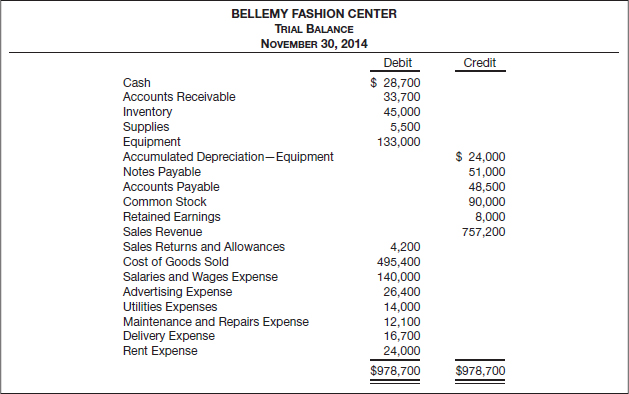
Adjustment data:
- Supplies on hand totaled $1,500.
- Depreciation is $15,000 on the equipment.
- Interest of $11,000 is accrued on notes payable at November 30.
Other data:
- Salaries expense is 70% selling and 30% administrative.
- Rent expense and utilities expenses are 80% selling and 20% administrative.
- $30,000 of notes payable are due for payment next year.
- Maintenance and repairs expense is 100% administrative.
(a) Journalize the adjusting entries.
(b) Prepare an adjusted trial balance.
(c) Prepare a multiple-step income statement and retained earnings statement for the year and a classified balance sheet as of November 30, 2014.
(d) Journalize the closing entries.
(e) Prepare a post-closing trial balance.
![]()
P3-5 (Adjusting Entries) The accounts listed below appeared in the December 31 trial balance of the Savard Theater.

Instructions
(a) From the account balances listed above and the information given below, prepare the annual adjusting entries necessary on December 31. (Omit explanations.)
(1) The equipment has an estimated life of 16 years and a salvage value of $24,000 at the end of that time. (Use straight-line method.)
(2) The note payable is a 90-day note given to the bank October 20 and bearing interest at 8%. (Use 360 days for denominator.)
(3) In December, 2,000 coupon admission books were sold at $30 each. They could be used for admission any time after January 1.
(4) Advertising expense paid in advance and included in Advertising Expense $1,100.
(5) Salaries and wages accrued but unpaid $4,700.
(b) What amounts should be shown for each of the following on the income statement for the year?
(1) Interest expense.
(2) Admissions revenue.
(3) Advertising expense.
(4) Salaries and wages expense.
![]()
![]()
P3-6 (Adjusting Entries and Financial Statements) The following are the trial balance and the other information related to Yorkis Perez, a consulting engineer.
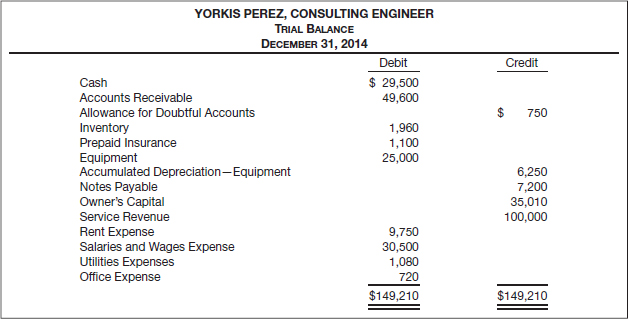
- Fees received in advance from clients $6,000.
- Services performed for clients that were not recorded by December 31, $4,900.
- Bad debt expense for the year is $1,430.
- Insurance expired during the year $480.
- Equipment is being depreciated at 10% per year.
- Yorkis Perez gave the bank a 90-day, 10% note for $7,200 on December 1, 2014.
- Rent of the building is $750 per month. The rent for 2014 has been paid, as has that for January 2015.
- Office salaries and wages earned but unpaid December 31, 2014, $2,510.
Instructions
(a) From the trial balance and other information given, prepare annual adjusting entries as of December 31, 2014. (Omit explanations.)
(b) Prepare an income statement for 2014, a statement of owner's equity, and a classified balance sheet. Yorkis Perez withdrew $17,000 cash for personal use during the year.
![]()
![]()
P3-7 (Adjusting Entries and Financial Statements) Rolling Hills Golf Inc. was organized on July 1, 2014. Quarterly financial statements are prepared. The unadjusted trial balance and adjusted trial balance on September 30 are shown here.
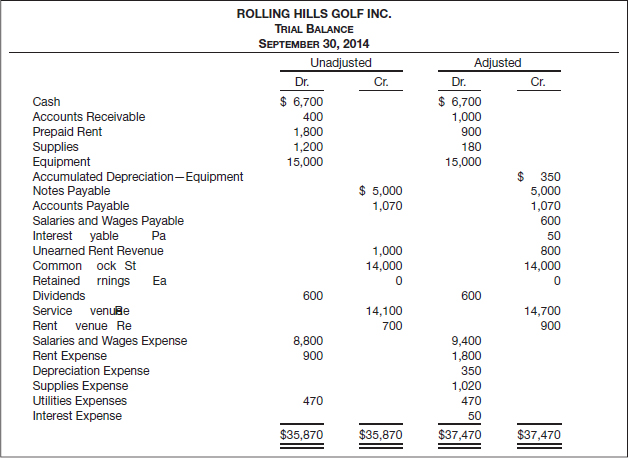
Instructions
(a) Journalize the adjusting entries that were made.
(b) Prepare an income statement and a retained earnings statement for the 3 months ending September 30 and a classified balance sheet at September 30.
(c) Identify which accounts should be closed on September 30.
(d) If the note bears interest at 12%, how many months has it been outstanding?
![]()
![]()
P3-8 (Adjusting Entries and Financial Statements) Vedula Advertising Agency was founded by Murali Vedula in January 2009. Presented on the next page are both the adjusted and unadjusted trial balances as of December 31, 2014.
Instructions
(a) Journalize the annual adjusting entries that were made.
(b) Prepare an income statement and a retained earnings statement for the year ended December 31, and a classified balance sheet at December 31.
(c) Identify which accounts should be closed on December 31.
(d) If the note has been outstanding 10 months, what is the annual interest rate on that note?
(e) If the company paid $10,500 in salaries and wages in 2014, what was the balance in Salaries and Wages Payable on December 31, 2013?
![]()
![]()
![]()
![]()
P3-9 (Adjusting and Closing) Presented below is the trial balance of the Crestwood Golf Club, Inc. as of December 31. The books are closed annually on December 31.
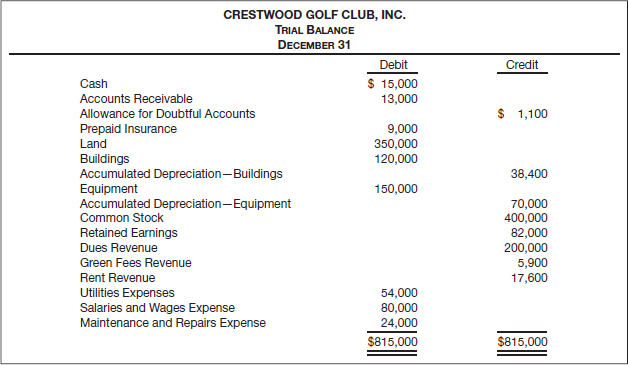
(a) Enter the balances in ledger accounts. Allow five lines for each account.
(b) From the trial balance and the information given below, prepare annual adjusting entries and post to the ledger accounts. (Omit explanations.)
(1) The buildings have an estimated life of 30 years with no salvage value (straight-line method).
(2) The equipment is depreciated at 10% per year.
(3) Insurance expired during the year $3,500.
(4) The rent revenue represents the amount received for 11 months for dining facilities. The December rent has not yet been received.
(5) It is estimated that 12% of the accounts receivable will be uncollectible.
(6) Salaries and wages earned but not paid by December 31, $3,600.
(7) Dues received in advance from members $8,900.
(c) Prepare an adjusted trial balance.
(d) Prepare closing entries and post.
![]()
![]()
![]()
![]()
![]()
P3-10 (Adjusting and Closing) Presented below is the December 31 trial balance of New York Boutique.
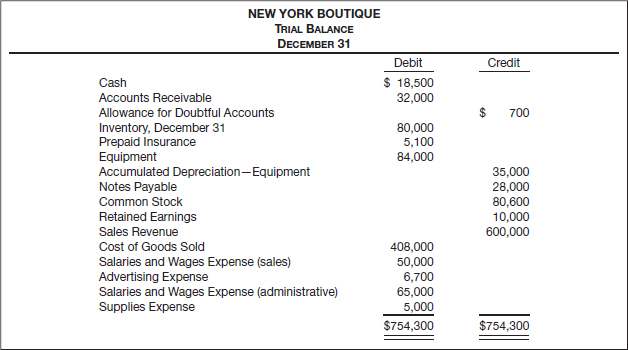
Instructions
(a) Construct T-accounts and enter the balances shown.
(b) Prepare adjusting journal entries for the following and post to the T-accounts. (Omit explanations.) Open additional T-accounts as necessary. (The books are closed yearly on December 31.)
(1) Bad debt expense is estimated to be $1,400.
(2) Equipment is depreciated based on a 7-year life (no salvage value).
(3) Insurance expired during the year $2,550.
(4) Interest accrued on notes payable $3,360.
(5) Sales salaries and wages earned but not paid $2,400.
(6) Advertising paid in advance $700.
(7) Office supplies on hand $1,500, charged to Supplies Expense when purchased.
(c) Prepare closing entries and post to the accounts.
![]()
*P3-11 (Cash and Accrual Basis) On January 1, 2014, Norma Smith and Grant Wood formed a computer sales and service company in Soapsville, Arkansas, by investing $90,000 cash. The new company, Arkansas Sales and Service, has the following transactions during January.
- Pays $6,000 in advance for 3 months' rent of office, showroom, and repair space.
- Purchases 40 personal computers at a cost of $1,500 each, 6 graphics computers at a cost of $2,500 each, and 25 printers at a cost of $300 each, paying cash upon delivery.
- Sales, repair, and office employees earn $12,600 in salaries and wages during January, of which $3,000 was still payable at the end of January.
- Sells 30 personal computers at $2,550 each, 4 graphics computers for $3,600 each, and 15 printers for $500 each; $75,000 is received in cash in January, and $23,400 is sold on a deferred payment basis.
- Other operating expenses of $8,400 are incurred and paid for during January; $2,000 of incurred expenses are payable at January 31.
Instructions
(a) Using the transaction data above, prepare (1) a cash-basis income statement and (2) an accrual-basis income statement for the month of January.
(b) Using the transaction data above, prepare (1) a cash-basis balance sheet and (2) an accrual-basis balance sheet as of January 31, 2014.
(c) Identify the items in the cash-basis financial statements that make cash-basis accounting inconsistent with the theory underlying the elements of financial statements.
![]()
![]()
![]()
![]()
*P3-12 (Worksheet, Balance Sheet, Adjusting and Closing Entries) Cooke Company has a fiscal year ending on September 30. Selected data from the September 30 worksheet are presented below.
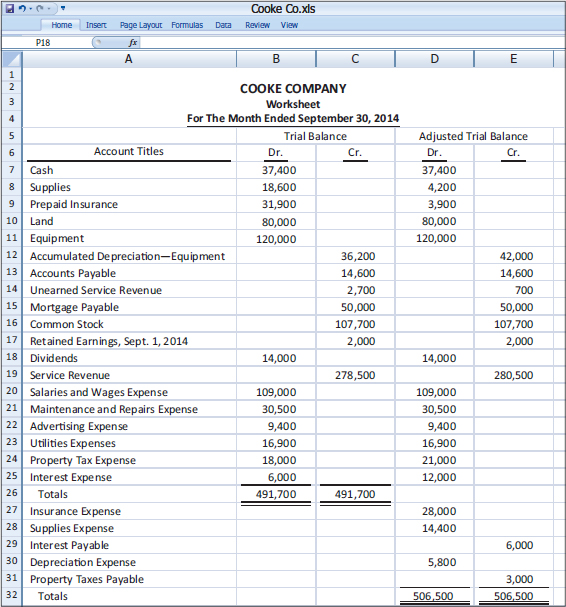
(a) Prepare a complete worksheet.
(b) Prepare a classified balance sheet. (Note: $10,000 of the mortgage payable is due for payment in the next fiscal year.)
(c) Journalize the adjusting entries using the worksheet as a basis.
(d) Journalize the closing entries using the worksheet as a basis.
(e) Prepare a post-closing trial balance.
PROBLEMS SET B
See the book's companion website, at www.wiley.com/college/kieso, for an additional set of problems.
USING YOUR JUDGMENT
FINANCIAL REPORTING
Financial Reporting Problem
The Procter & Gamble Company (P&G)
![]()
The financial statements of P&G are presented in Appendix 5B. The company's complete annual report, including the notes to the financial statements, can be accessed at the book's companion website, www.wiley.com/college/kieso.
Instructions
Refer to these financial statements and the accompanying notes to answer the following questions.
(a) What were P&G's total assets at June 30, 2011? At June 30, 2010?
(b) How much cash (and cash equivalents) did P&G have on June 30, 2011?
(c) What were P&G's research and development costs in 2010? In 2011?
(d) What were P&G's revenues in 2010? In 2011?
(e) Using P&G's financial statements and related notes, identify items that may result in adjusting entries for deferrals and accruals.
(f) What were the amounts of P&G's depreciation and amortization expense in 2009, 2010, and 2011?
Comparative Analysis Case
The Coca-Cola Company and PepsiCo, Inc.
Instructions
Go to the book's companion website and use information found there to answer the following questions related to The Coca-Cola Company and PepsiCo, Inc.
(a) Which company had the greater percentage increase in total assets from 2010 to 2011?
(b) Using the Selected Financial Data section of these two companies, determine their 5-year average growth rates related to net sales and income from continuing operations.
(c) Which company had more depreciation and amortization expense for 2011? Provide a rationale as to why there is a difference in these amounts between the two companies.
Financial Statement Analysis Case
Kellogg Company
Kellogg Company has its headquarters in Battle Creek, Michigan. The company manufactures and sells ready-to-eat breakfast cereals and convenience foods including cookies, toaster pastries, and cereal bars.
Selected data from Kellogg Company's 2011 annual report follows (dollar amounts in millions).

In its annual reports, Kellogg Company has indicated that it plans to achieve sustainability of its operating results with operating principles that emphasize profit-rich, sustainable sales growth, as well as cash flow and return on invested capital. Kellogg believes its steady earnings growth, strong cash flow, and continued investment during a multi-year period demonstrates the strength and flexibility of its business model.
Instructions
(a) Compute the percentage change in sales, operating profit, net cash flow less capital expenditures, and net earnings from year to year for the years presented.
(b) Evaluate Kellogg's performance. Which trend seems most favorable? Which trend seems least favorable? What are the implications of these trends for Kellogg's sustainable performance objectives? Explain.
Accounting, Analysis, and Principles
The Amato Theater is nearing the end of the year and is preparing for a meeting with its bankers to discuss the renewal of a loan. The accounts listed below appeared in the December 31, 2014, trial balance.
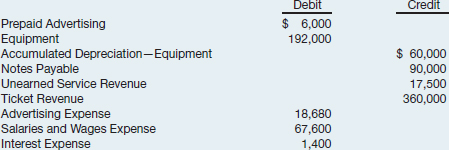
Additional information is available as follows.
- The equipment has an estimated useful life of 16 years and a salvage value of $40,000 at the end of that time. Amato uses the straight-line method for depreciation.
- The note payable is a one-year note given to the bank January 31 and bearing interest at 10%. Interest is calculated on a monthly basis.
- Late in December 2014, the theater sold 350 coupon ticket books at $50 each. One hundred fifty of these ticket books can be used only for admission any time after January 1, 2015. The cash received was recorded as Unearned Service Revenue.
- Advertising paid in advance was $6,000 and was debited to Prepaid Advertising. The company has used $2,500 of the advertising as of December 31, 2014.
- Salaries and wages accrued but unpaid at December 31, 2014, were $3,500.
Accounting
Prepare any adjusting journal entries necessary for the year ended December 31, 2014.
Analysis
Determine Amato's income before and after recording the adjusting entries. Use your analysis to explain why Amato's bankers should be willing to wait for Amato to complete its year-end adjustment process before making a decision on the loan renewal.
Principles
Although Amato's bankers are willing to wait for the adjustment process to be completed before they receive financial information, they would like to receive financial reports more frequently than annually or even quarterly. What trade-offs, in terms of relevance and faithful representation, are inherent in preparing financial statements for shorter accounting time periods?
BRIDGE TO THE PROFESSION
Professional Research
Recording transactions in the accounting system requires knowledge of the important characteristics of the elements of financial statements, such as assets and liabilities. In addition, accountants must understand the inherent uncertainty in accounting measures and distinctions between related accounting concepts that are important in evaluating the effects of transactions on the financial statements.
Instructions
Go to http://aaahq.org/asclogin.cfm to log in and provide explanations for the following items. (Provide paragraph citations.) When you have accessed the documents, you can use the search tool in your Internet browser.
(a) The three essential characteristics of assets.
(b) The three essential characteristics of liabilities.
(c) Uncertainty and its effect on financial statements.
(d) The difference between realization and recognition.
Additional Professional Resources
See the book's companion website, at www.wiley.com/college/kieso, for professional simulations as well as other study resources.
 INSIGHTS
INSIGHTS
LEARNING OBJECTIVE ![]()
Compare the accounting information systems under GAAP and IFRS.
As indicated in this chapter, companies must have an effective accounting system. In the wake of accounting scandals at U.S. companies like Sunbeam, Rite-Aid, Xerox, and WorldCom, U.S. lawmakers demanded higher assurance on the quality of accounting reports. Since the passage of the Sarbanes-Oxley Act of 2002 (SOX), companies that trade on U.S. exchanges are required to place renewed focus on their accounting systems to ensure accurate reporting.
RELEVANT FACTS
Following are the key similarities and differences between GAAP and IFRS related to accounting information systems.
Similarities
- International companies use the same set of procedures and records to keep track of transaction data. Thus, the material in Chapter 3 dealing with the account, general rules of debit and credit, and steps in the recording process—the journal, ledger, and chart of accounts—is the same under both GAAP and IFRS.
- Transaction analysis is the same under GAAP and IFRS but, as you will see in later chapters, different standards sometimes impact how transactions are recorded.
- Both the FASB and IASB go beyond the basic definitions provided in this textbook for the key elements of financial statements, that is, assets, liabilities, equity, revenues, and expenses.
- A trial balance under IFRS follows the same format as shown in the textbook. As shown in the textbook, dollar signs are typically used only in the trial balance and the financial statements. The same practice is followed under IFRS, using the currency of the country in which the reporting company is headquartered.
Differences
- Rules for accounting for specific events sometimes differ across countries. For example, European companies rely less on historical cost and more on fair value than U.S. companies. Despite the differences, the double-entry accounting system is the basis of accounting systems worldwide.
- Internal controls are a system of checks and balances designed to prevent and detect fraud and errors. While most public U.S. companies have these systems in place, many non-U.S. companies have never completely documented them nor had an independent auditor attest to their effectiveness. Both of these actions are required under SOX. These enhanced internal control standards apply only to large public companies listed on U.S. exchanges.
ABOUT THE NUMBERS
Accounting System Internal Controls
There is continuing debate over whether foreign issuers should have to comply with the extra layer of regulation related to internal controls attestation.4 Companies find that internal control review is a costly process but needed. One study estimates the cost of compliance for U.S. companies at over $35 billion, with audit fees doubling in the first year of compliance. At the same time, examination of internal controls indicates lingering problems in the way companies operate. One study of first compliance with the internal control testing provisions documented material weaknesses for about 13 percent of companies reporting in 2004 and 2005.
Debate about requiring foreign companies to comply with SOX centers on whether the higher costs of a good information system are making the U.S. securities markets less competitive. Presented below are statistics for initial public offerings (IPOs) in the years since the passage of SOX.
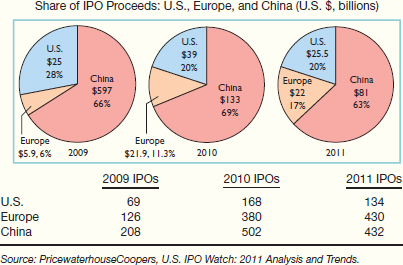
Note the U.S. share of IPOs has steadily declined. Some critics of the SOX provisions attribute the decline to the increased cost of complying with the internal control rules. Others, looking at these same trends, are not so sure about SOX being the cause of the relative decline of U.S. IPOs. These commentators argue that growth in non-U.S. markets is a natural consequence of general globalization of capital flows.
First-Time Adoption of IFRS
As discussed in Chapter 1, IFRS is growing in acceptance around the world. For example, recent statistics indicate 40 percent of the Global Fortune 500 companies use IFRS. And the chair of the IASB predicts that IFRS adoption will grow from its current level of over 115 countries to nearly 150 countries in the near future.
When countries accept IFRS for use as accepted accounting policies, companies need guidance to ensure that their first IFRS financial statements contain high-quality information. Specifically, IFRS 1 requires that information in a company's first IFRS statements (1) be transparent, (2) provide a suitable starting point, and (3) have a cost that does not exceed the benefits. As a result, many companies will be going through a substantial conversion process to switch from their reporting standards to IFRS.
The overriding principle in converting to IFRS is full retrospective application of IFRS. Retrospective application—recasting prior financial statements on the basis of IFRS—provides financial statement users with comparable information. As indicated, the objective of the conversion process is to present a set of IFRS statements as if the company always reported using IFRS. To achieve this objective, a company follows these steps:
- Identify the timing of its first IFRS statements.
- Prepare an opening balance sheet at the date of transition to IFRS.
- Select accounting principles that comply with IFRS, and apply these principles retrospectively.
- Make extensive disclosures to explain the transition to IFRS.
Once a company decides to convert to IFRS, it must decide on the transition date and the reporting date. The transition date is the beginning of the earliest period for which full comparative IFRS information is presented. The reporting date is the closing balance sheet date for the first IFRS financial statements.
To illustrate, assume that FirstChoice Company plans to provide its first IFRS statements for the year ended December 31, 2016. FirstChoice decides to present comparative information for one year only. Therefore, its date of transition to IFRS is January 1, 2015, and its reporting date is December 31, 2016. The timeline for first-time adoption is presented in the following graphic.

The graphic shows the following.
- The opening IFRS statement of financial position for FirstChoice on January 1, 2015, serves as the starting point (date of transition) for the company's accounting under IFRS.
- The first full IFRS statements are shown for FirstChoice for December 31, 2016. In other words, a minimum of two years of IFRS statements must be presented before a conversion to IFRS occurs. As a result, FirstChoice must prepare at least one year of comparative financial statements for 2016 using IFRS.
- FirstChoice presents financial statements in accordance with GAAP annually to December 31, 2015.
Following this conversion process, FirstChoice provides users of the financial statements with comparable IFRS statements for 2015 and 2016. Upon first-time adoption of IFRS, a company must present at least one year of comparative information under IFRS.
ON THE HORIZON
The basic recording process shown in this textbook is followed by companies around the globe. It is unlikely to change in the future. The definitional structure of assets, liabilities, equity, revenues, and expenses may change over time as the IASB and FASB evaluate their overall conceptual framework for establishing accounting standards. In addition, high-quality international accounting requires both high-quality accounting standards and high-quality auditing. Similar to the convergence of GAAP and IFRS, there is a movement to improve international auditing standards. The International Auditing and Assurance Standards Board (IAASB) functions as an independent standard-setting body. It works to establish high-quality auditing and assurance and quality-control standards throughout the world. Whether the IAASB adopts internal control provisions similar to those in SOX remains to be seen. You can follow developments in the international audit arena at http://www.ifac.org/iaasb/.
IFRS SELF-TEST QUESTIONS
- Which statement is correct regarding IFRS?
(a) IFRS reverses the rules of debits and credits, that is, debits are on the right and credits are on the left.
(b) IFRS uses the same process for recording transactions as GAAP.
(c) The chart of accounts under IFRS is different because revenues follow assets.
(d) None of the above statements are correct.
- Information in a company's first IFRS statements must:
(a) have a cost that does not exceed the benefits.
(b) be transparent.
(c) provide a suitable starting point.
(d) All the above.
- The transition date is the date:
(a) when a company no longer reports under its national standards.
(b) when the company issues its most recent financial statement under IFRS.
(c) three years prior to the reporting date.
(d) None of the above.
- When converting to IFRS, a company must:
(a) recast previously issued financial statements in accordance with IFRS.
(b) use GAAP in the reporting period but subsequently use IFRS.
(c) prepare at least three years of comparative statements.
(d) use GAAP in the transition year but IFRS in the reporting year.
- The purpose of presenting comparative information in the transition to IFRS is:
(a) to ensure that the information is a faithful representation.
(b) in accordance with the Sarbanes-Oxley Act.
(c) to provide users of the financial statements with information on GAAP in one period and IFRS in the other period.
(d) to provide users of the financial statements with information on IFRS for at least two periods.
IFRS CONCEPTS AND APPLICATION
IFRS3-1 How is the date of transition and the date of reporting determined in first-time adoption of IFRS?
IFRS3-2 What are the characteristics of high-quality information in a company's first IFRS financial statements?
IFRS3-3 What are the steps to be completed in preparing the opening IFRS statement of financial position?
IFRS3-4 Becker Ltd. is planning to adopt IFRS and prepare its first IFRS financial statements at December 31, 2015. What is the date of Becker's opening balance sheet, assuming one year of comparative information? What periods will be covered in Becker's first IFRS financial statements?
Professional Research
IFRS3-5 Recording transactions in the accounting system requires knowledge of the important characteristics of the elements of financial statements, such as assets and liabilities. In addition, accountants must understand the inherent uncertainty in accounting measures and distinctions between related accounting concepts that are important in evaluating the effects of transactions on the financial statements.
Instructions
Access the IASB Framework at the IASB website (http://eifrs.iasb.org/). (Click on the IFRS tab and then register for free eIFRS access if necessary.) When you have accessed the documents, you can use the search tool in your Internet browser to respond to the following items. (Provide paragraph citations.)
(a) Provide the definition of an asset and discuss how the economic benefits embodied in an asset might flow to a company.
(b) Provide the definition of a liability and discuss how a company might satisfy a liability.
(c) What is “accrual basis”? How do adjusting entries illustrate application of the accrual basis?
International Financial Reporting Problem
Marks and Spencer plc
IFRS3-6 The financial statements of Marks and Spencer plc (M&S) are available at the book's companion website or can be accessed at http://annualreport.marksandspencer.com/_assets/downloads/Marks-and-Spencer-Annual-report-and-financial-statements-2012.pdf.
Instructions
Refer to M&S's financial statements and the accompanying notes to answer the following questions.
(a) What were M&S's total assets at 31 March 2012? At 2 April 2011?
(b) How much cash (and cash equivalents) did M&S have on 31 March 2012?
(c) What were M&S's selling and marketing expenses in 2012? In 2011?
(d) What were M&S's revenues in 2012? In 2011?
(e) Using M&S's financial statements and related notes, identify items that may result in adjusting entries for prepayments and accruals.
(f) What were the amounts of M&S's depreciation and amortization expense in 2011 and 2012?
ANSWERS TO IFRS SELF-TEST QUESTIONS
- b
- d
- d
- a
- d
Remember to check the book's companion website to find additional resources for this chapter.
1A recent survey indicated nearly one in three companies view the benefits of Sarbanes-Oxley (SOX) to outweigh its costs. Approximately half of the companies believe the costs exceed the benefits of SOX to some degree. Management view their companies generally as benefiting from SOX but overall have a slightly negative view toward the legislation. In a large percentage of companies, the internal control over financial reporting has improved since SOX became a requirement. See “Where U.S.-Listed Companies Stand: Reviewing Cost, Time, Effort and Processes,” 2012 Sarbanes-Oxley Compliance Survey (Protiviti Company, May 2012).
2“Elements of Financial Statements of Business Enterprises,” Statement of Financial Accounting Concepts No. 6 (Stamford, Conn.: FASB, 1985), pp. 259–260.
3Companies in the following situations might use a cash or modified cash basis.
(1) A company that is primarily interested in cash flows (for example, a group of physicians that distributes cash-basis earnings for salaries and bonuses).
(2) A company that has a limited number of financial statement users (small, closely held company with little or no debt).
(3) A company that has operations that are relatively straightforward (small amounts of inventory, long-term assets, or long-term debt).
4See Greg Ip, Kara Scannel, and Deborah Solomon, “Trade Winds in Call to Deregulate Business, A Global Twist,” Wall Street Journal (January 25, 2007), p. A1.

